Ryanair Review: Are They Really That Bad? My Experience from Luton to Dublin
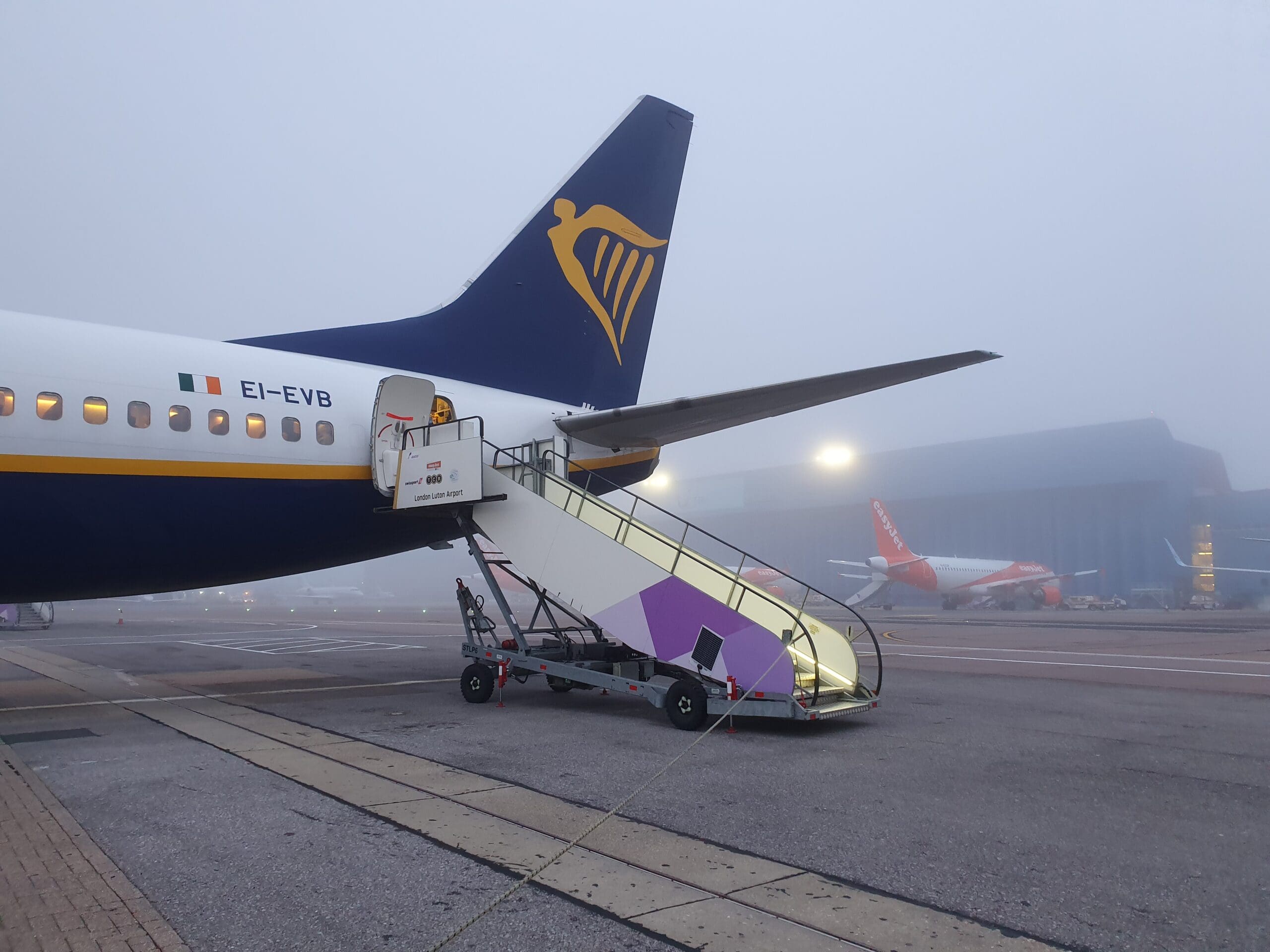
Background
Having booked tickets for a weekend trip to Donegal in order to catch my first-ever flights onboard the rare Fokker 50, I soon began my search for low cost options to reach Dublin from London. Given the plethora of flights that connect London with the Irish capital, I was confident that I would not have to look too far in order to find a reasonably priced option. As expected, of the three carriers operating direct services between the two cities – Aer Lingus, British Airways and Ryanair, the latter carrier offered the cheapest tickets by far. Thus, with little hesitation, I began to plan what would be my seventeenth trip onboard O’Leary’s fun bus, and what better way to celebrate this milestone than writing my first trip report on the carrier?
Booking
With no reason to book tickets through a third party, I opened up my long-dormant Ryanair app and wracked my brain for my Ryanair account password. After several attempts, I finally entered this and buzzed over to the search engine where I filled out all the relevant details. Interestingly, there was no option to select flights from all London airports – instead, passengers were forced into picking Gatwick, Luton, Southend or Stansted when searching for flights. The reason for this is rather clear, discouraging passengers from travelling to another airport for a cheaper flight. Having already undertaken my research on Skyscanner, I had deciphered that the 0630 service from Luton would be the best option for me. Moments later I was presented with Ryanair’s only service between Luton and Dublin that day – the cheapest fare for this coming to a respectable £15.
Selecting this, I was then presented with four ticket options – Value, Regular, Plus and Flexi Plus, these ranging from an additional £20.85 to a pricey £72.85. Travelling on a budget, I selected the value fare and was then taken to the seat selection page. This revealed a mostly empty seat map with reservation costs ranging from £20 to £4. Recognising that I would have no option to select or change my seat following check-in, with payday on the horizon I decided to splurge an additional £4 on Seat 25F. Once this was done, I was then given the option to add security Fast Track for £5. Despite Luton’s infamously long security queues, I decided to pass on this and was soon presented with the baggage page. There, I was then given the option to add additional bags for between £10 and £20.99. Last but not least, I was then offered the opportunity to add car hire, onboard refreshments, insurance, car hire, parking and any other equipment to my booking. Rejecting all of these, I went ahead and paid £19 – receiving instant confirmation of my trip by email.
Whilst I had encountered no major issues with booking tickets via Ryanair’s app, as is to be expected given the airline’s status as an LCC, Ryanair’s booking process appears to be designed to catch out the unsuspecting passenger. Certain aspects of this appeared to be purposefully ambiguous, whilst each step of the booking process makes an unashamed effort at coercing passengers into purchasing additional add-ons. Pre-flight efforts to sell did not stop once I had booked my flight and in the day between booking and flying, I was bombarded with plenty of emails attempting to persuade me into opting for an additional add-on. On the plus side, at least there was no chance of me forgetting about my flight!
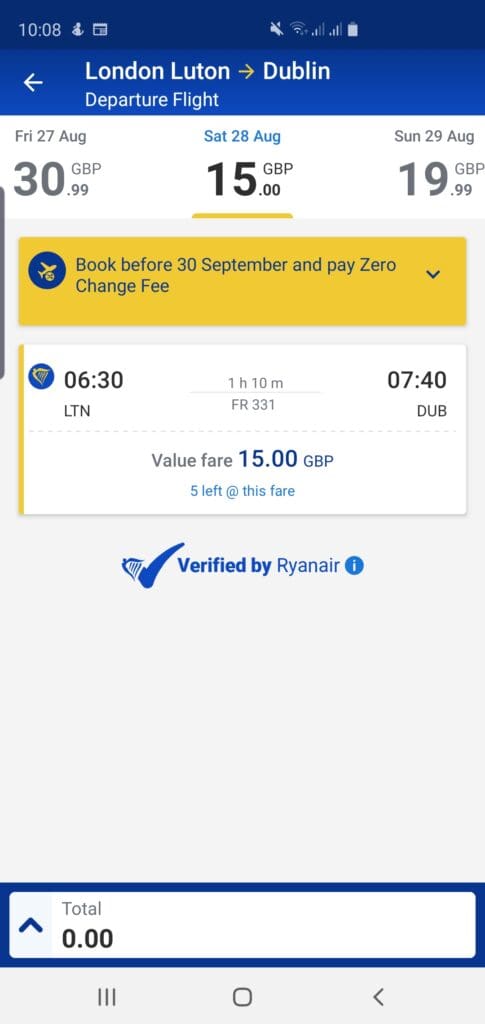
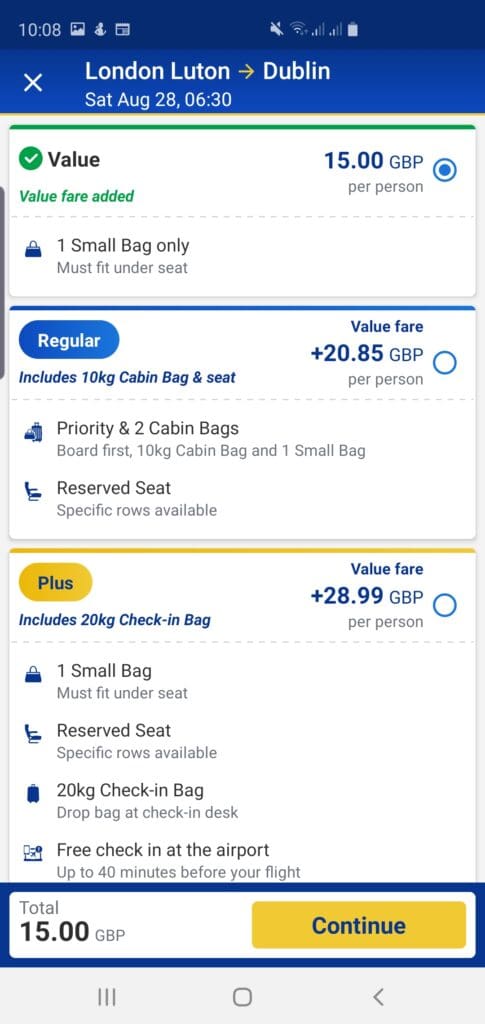
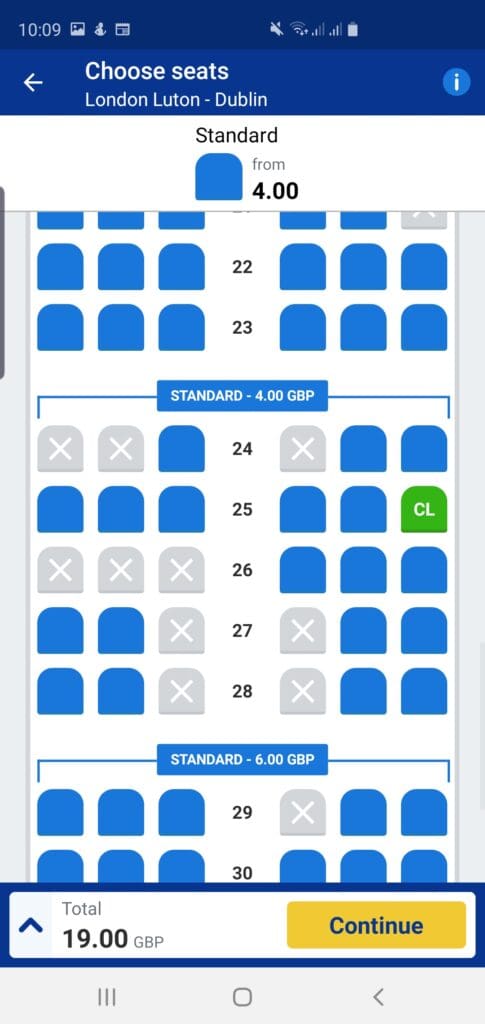
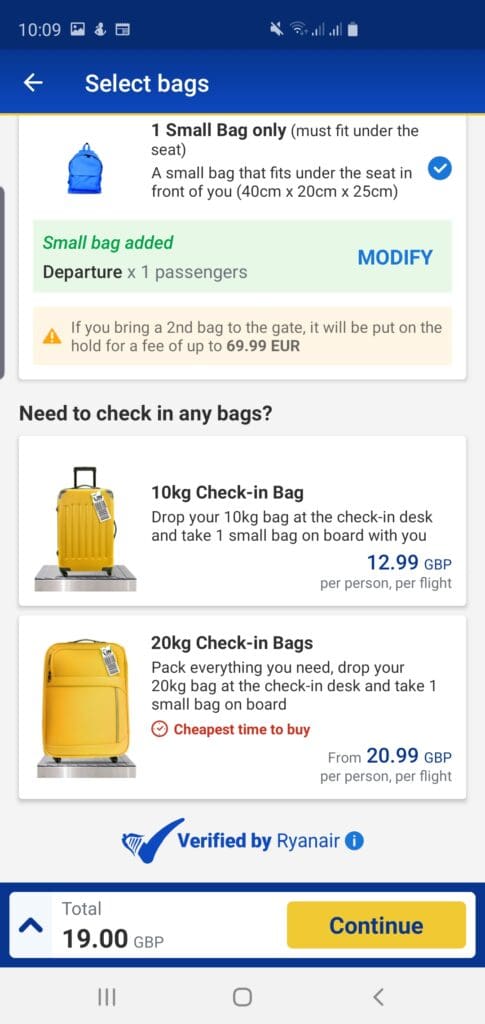
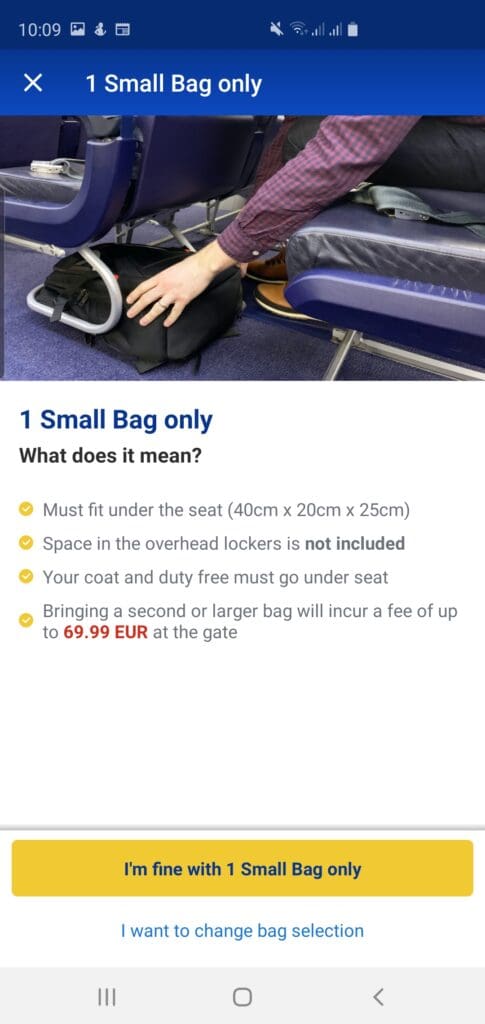
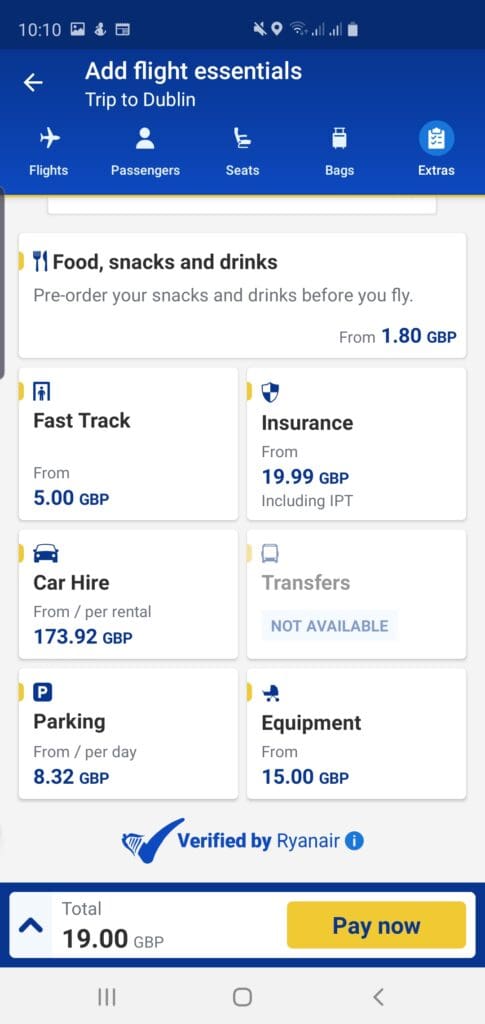
Check-in
Perhaps one of the most sneaky ways in which Ryanair catches out unsuspecting passengers is by charging an extortionate £55 charge for those who wish to check-in at the airport. Fortunately, as someone who usually checks in online, this was not a major issue, plus Ryanair does appear to place an emphasis on the importance of checking in online. Whilst this is possible sixty days prior to departure, with just over two weeks to go until my trip, I opened up the Ryanair app once again and began the check-in process. Once I had confirmed that I would neither carry dangerous goods nor travel with COVID-19 symptoms, I skipped past the option to add travel insurance and proceeded with the official formalities. These being the entry of my passport details, and the upload of evidence of my COVID-19 vaccination status. Once these were done, I rejected the option to add an additional bag, as well as the final optional extras page before being presented with my mobile boarding pass.
Once I had checked in, aside from packing and travelling to the airport, I had little to worry about other than completing the Irish government’s COVID-19 locator form. Fortunately, this proved to be no issue, and I completed it within a couple of minutes.
Getting to the Airport
Whilst aware that I would be unable to get much sleep the night prior to my 0630 flight to Dublin, I had not envisaged reaching the airport that morning to be a particularly cumbersome task. Initially, I had intended to catch a convenient Thameslink train service from one of central London’s stations to the airport, with these usually running through the night. However, I had neglected to check for scheduled engineering works, and, low and behold, these ensured that a significant portion of the railway line between London and Luton was closed that bank holiday weekend. Devising some potential routes, which included a taxi to Mill Hill Broadway station and then a train, or a bus to Victoria Coach station and then a bus, I decided to go for the sensible if not a little more expensive option of an airport hotel. Fortunately, two weeks prior to my scheduled departure day, I was still able to get a good deal for a room at the conveniently located Ibis Budget hotel – this costing £31.50.
Finishing work at 1730 on the dot, I rushed out and began the thirty-minute walk back to my shared house. Whilst for the most part there would have been no sense of urgency given that my flight was not to depart for another thirteen hours, I had hoped to reach Luton before dusk to partake in some evening aviation photography. Once home, I realised that the chance of reaching Luton before nightfall was slim and I relaxed a little, cooked dinner and then headed out into the unseasonably chilly late summer evening. Around an hour and a half and two busy trains later, I found myself embarking on the final stage of my journey to the hotel which involved a brisk walk up the hill atop of which sits Luton Airport. Eventually, I arrived at my home for the night – a no-frills yet perfectly acceptable hotel room at the Ibis Budget.
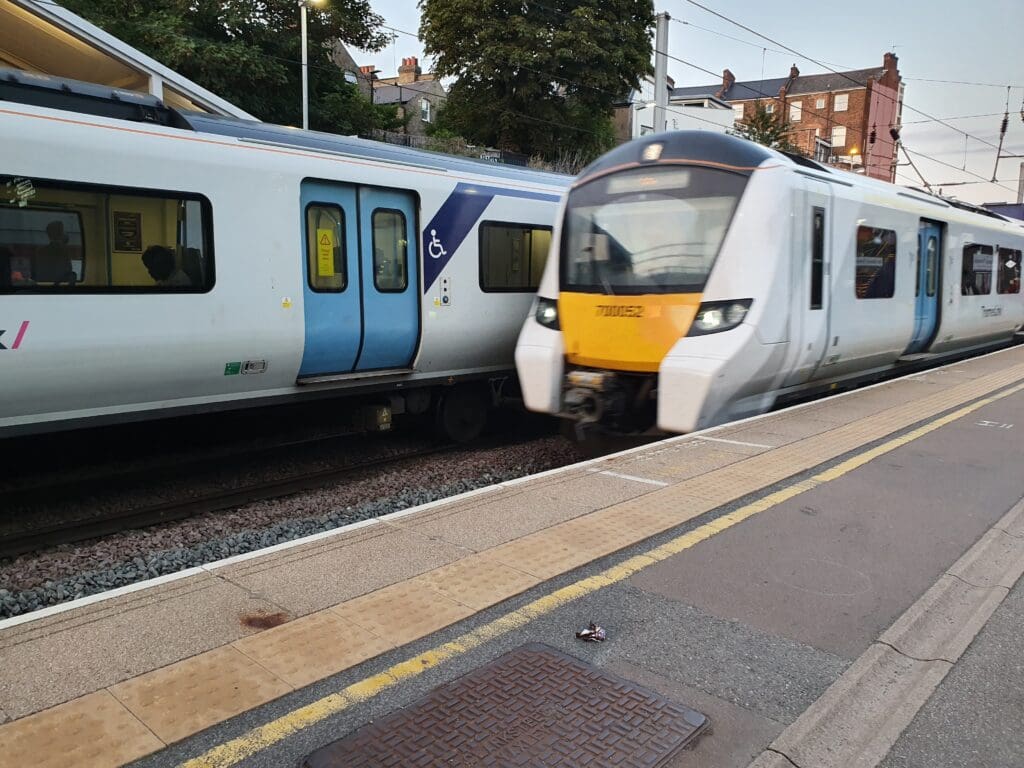
The Journey
Following no more than five hours of sleep, a shower and a quick check to ensure I left the Ibis with everything I arrived with, I headed out into the chilly pre-dawn air and hiked up the foggy hill towards the main terminal at around 0430. After passing under one of the airport’s taxiways, I found myself standing outside Luton Airport’s nondescript façade where hoards of passengers could be seen shuttling into the terminal from buses and taxis ready to head off on their morning flights. Upon entering the warm and bright terminal, I headed straight over to the security check area, entering this via an automated gate. Of London’s airports, along with Stansted, Luton Airport does not benefit from a particularly positive reputation when it comes to security queues. However that morning, around half of the sixteen or so security checkpoints were open and I managed to reach one of these after around ten minutes of shuffling forward. Once there, the security staff I interacted with were polite enough and conducted their duties efficiently and thoroughly.

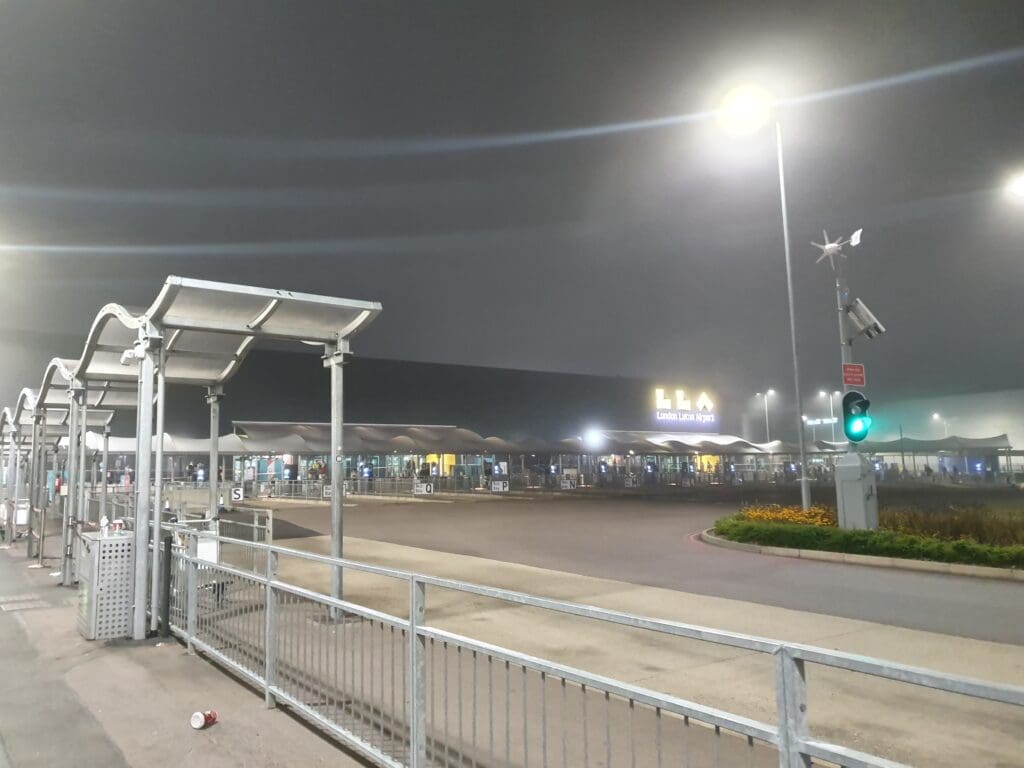
Having embarked on my last flight from Luton Airport in August 2017, it had been almost exactly four years since I had last visited the terminal. Nevertheless, relatively little appeared to have changed since my previous visit. Once through security, I proceeded up the escalators and soon arrived at the airport’s large duty-free store which had to be walked through in order to reach the main airside area. In terms of both design and facilities, Luton Airport’s airside area is atypical of many British airports – home to high ceilings, a generic colour palette of white and silver, and in places, a semi-furnished feel. In terms of facilities, the airside area contains a reasonable selection of cafes, shops and restaurants, reminiscent of a small shopping centre; around half of which seemed open at that time in the morning. For those not looking to eat, drink or shop before their flight, complimentary wifi is offered and I was pleased to find that this worked without interruption throughout the terminal.
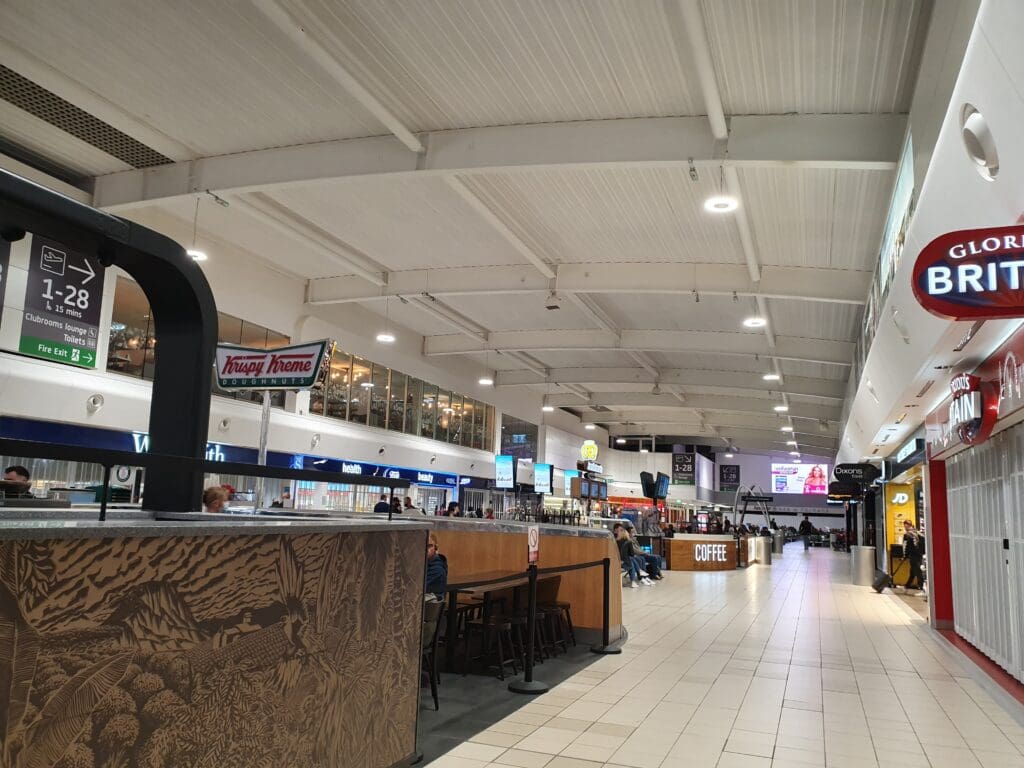
That morning, a grand total of 31 flights would depart to destinations across Europe before 0800, and so the terminal was understandably packed. Nevertheless, in spite of the high number of passengers, the terminal appeared to be in a reasonably clean state and importantly, no queuing was needed for a bathroom visit. Turning to the important stuff, large windows throughout much of the terminal allow for views of the action outside although that morning a combination of the darkness and fog ensured that views through these were limited. Of the 31 aforementioned departures, 45% were operated by EasyJet, 39% by Wizz Air, 13% by Ryanair and 3% by TUI Airways. Thus as a UK-based enthusiast, it is fair to say that Luton’s scheduled operations do not offer a great deal of excitement, although the frequent corporate aircraft movements succeed in drawing in enthusiasts.
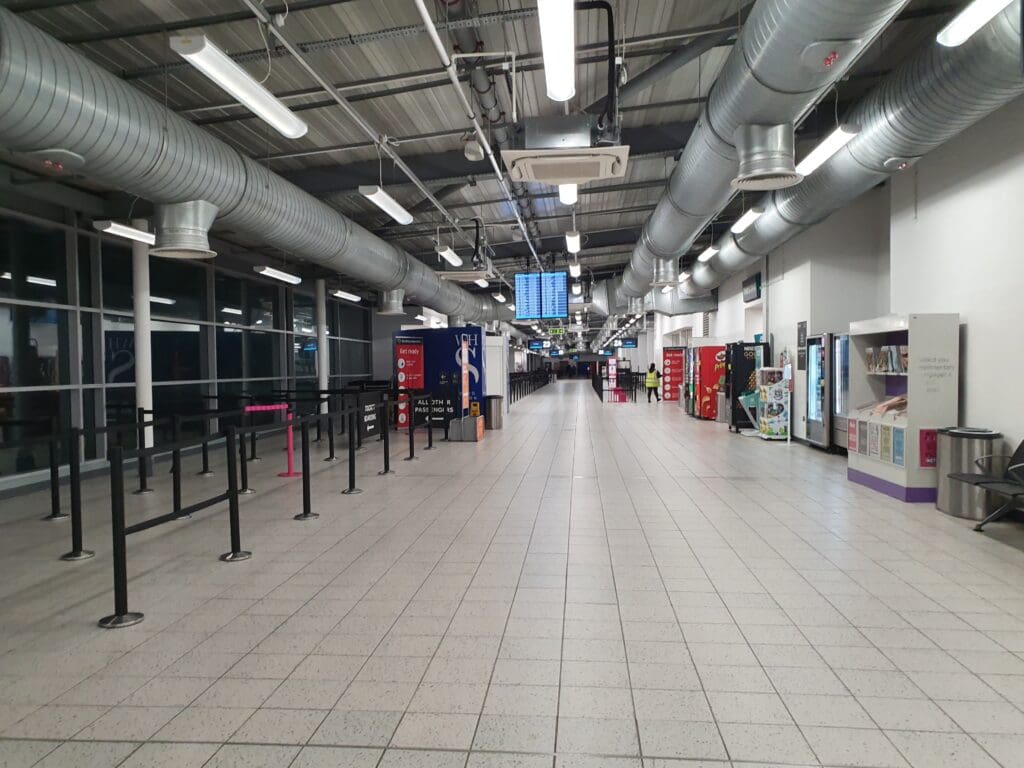
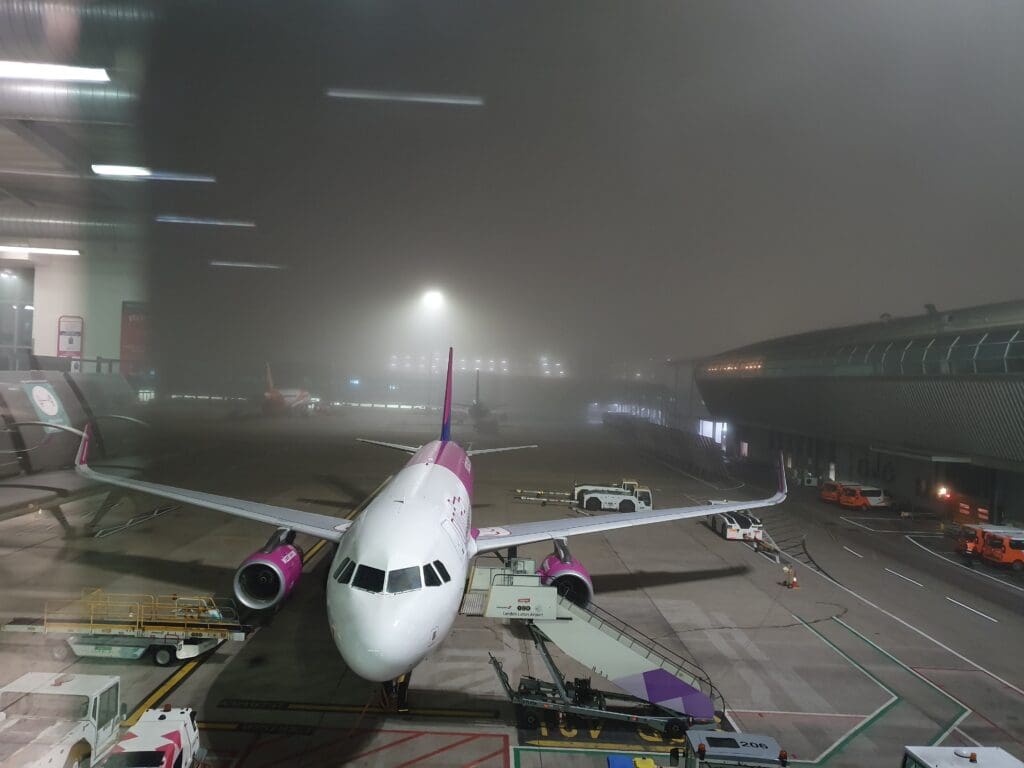
Following a short walk around, seeking some peace, I decided to set up camp on one of the terminal’s piers. Once there, I found a seat next to a window and some plug sockets and attempted to do some work as the skies very slowly began to brighten outside. In order to keep people in the main waiting area, and therefore spending, as much as possible, gates for most services from Luton are not revealed on the flight information display screen until a relatively short time before departure. However, Ryanair’s app had already informed me that my flight to Dublin would be departing from gate 11. As 0545 approached, I made my way back to the main waiting area to ensure that this was indeed the case before I headed down another pier, arriving at the gate within a couple of minutes of this being revealed on the departure boards.
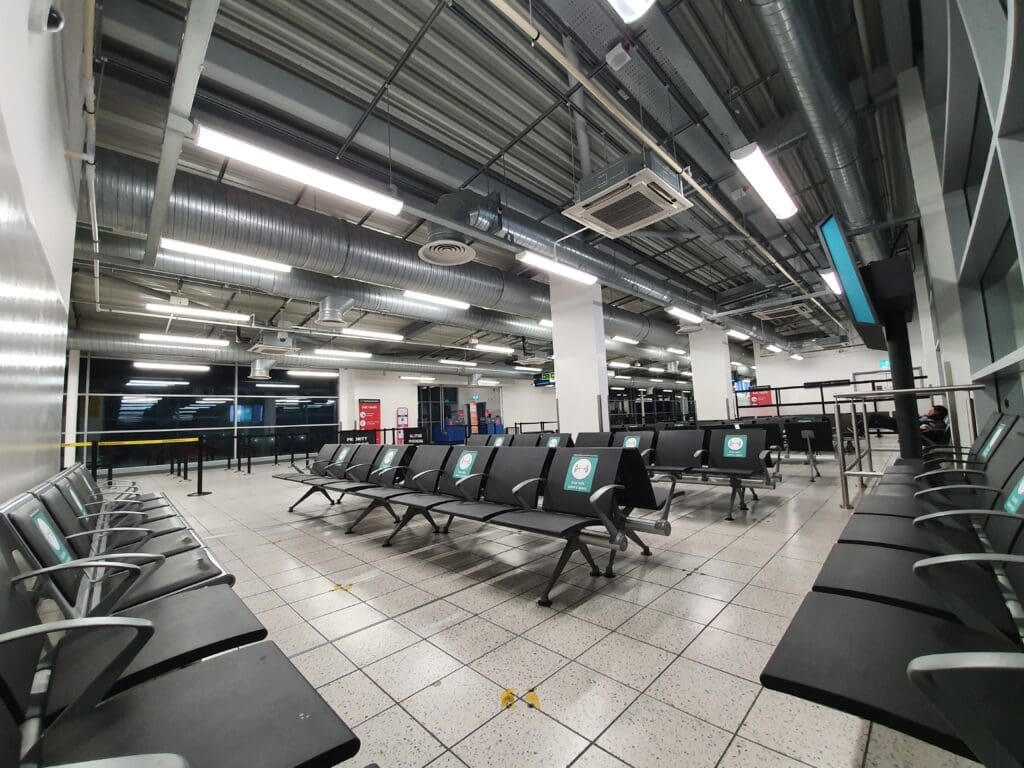
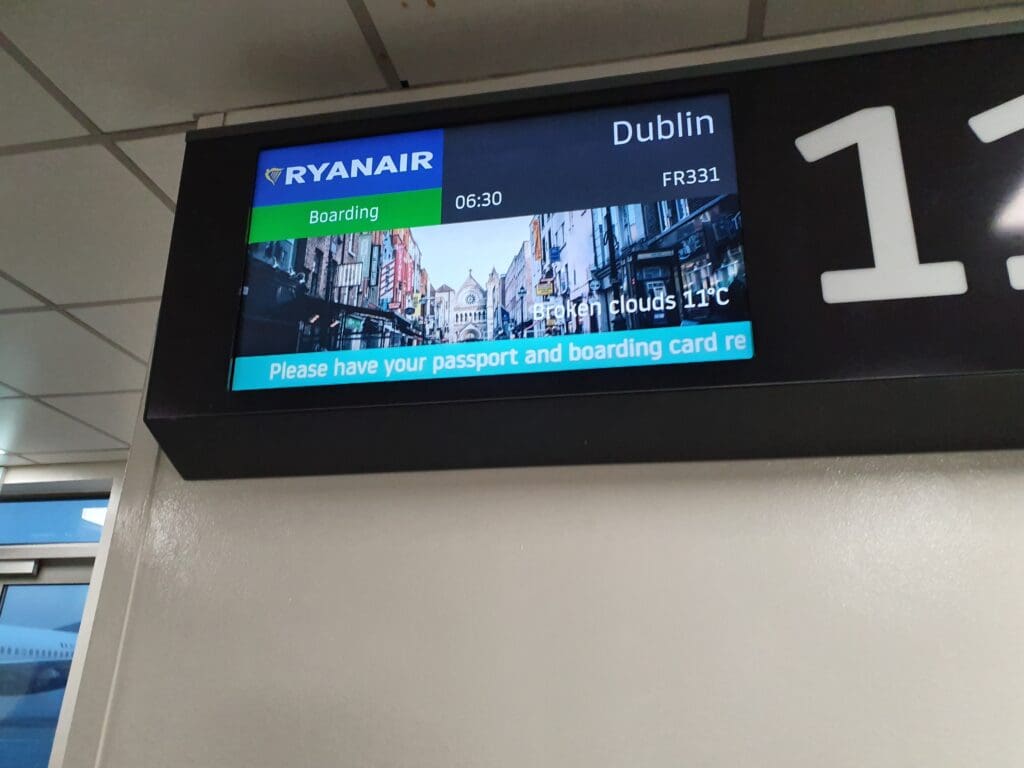
Much to my surprise, by the time I approached the gate, this was already packed and I was greeted by the sight of a long queue snaking down the stairs to the gate. Joining this, it was another ten minutes before things began to move and I slowly slithered down the stairs to the gate as the last of the priority boarders made their way out to the aircraft. Once boarding for the masses commenced, things moved along relatively quickly and at 0610 one of the two agents silently scanned my mobile boarding pass before I made my way outside towards the waiting jet.
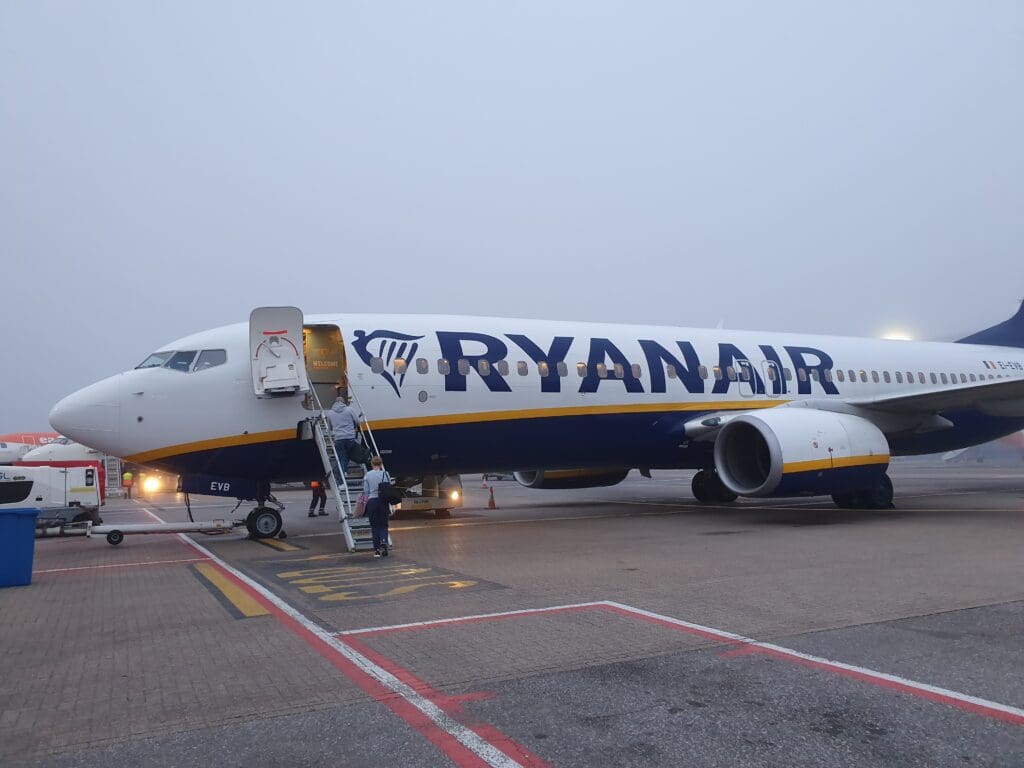
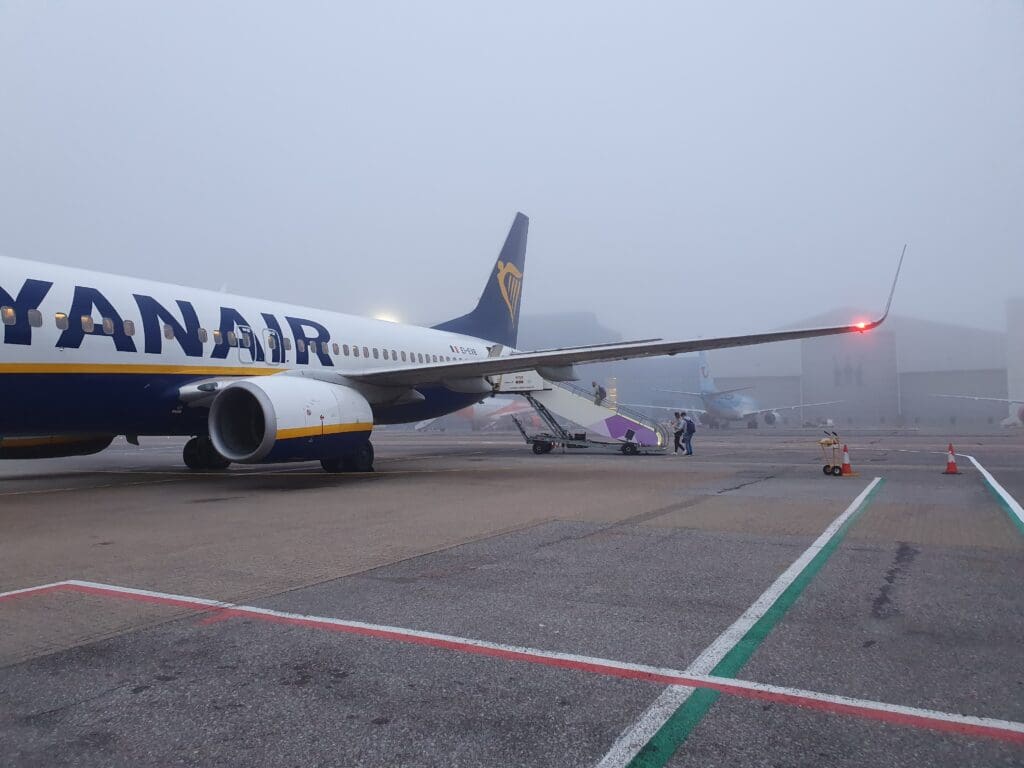
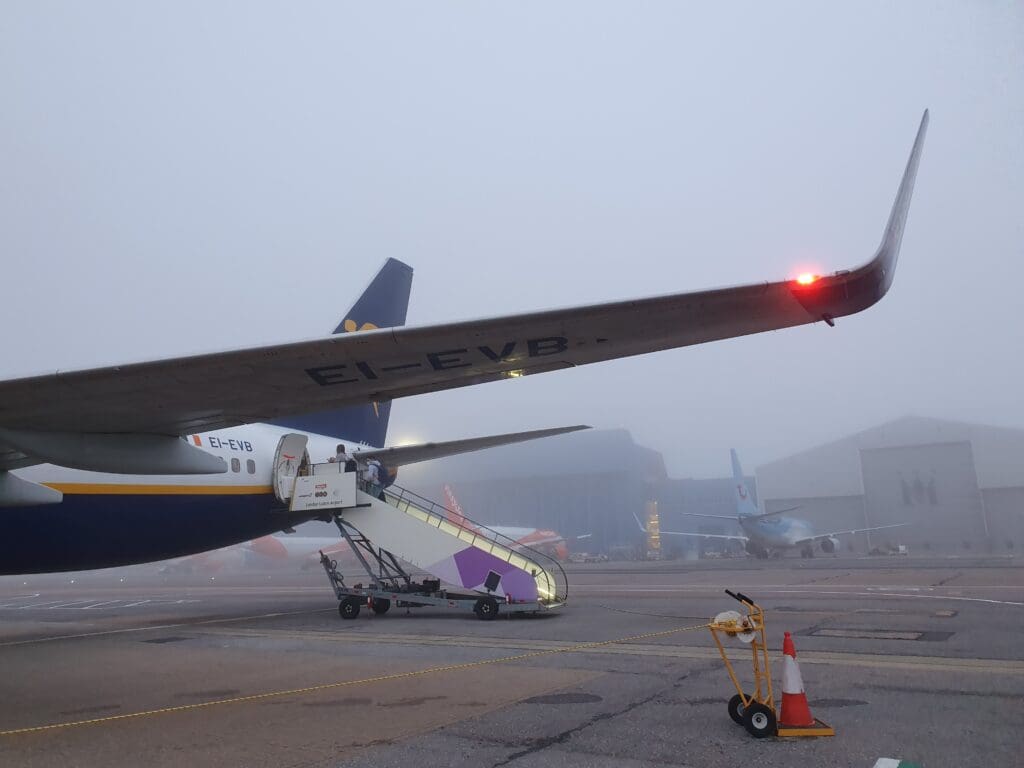
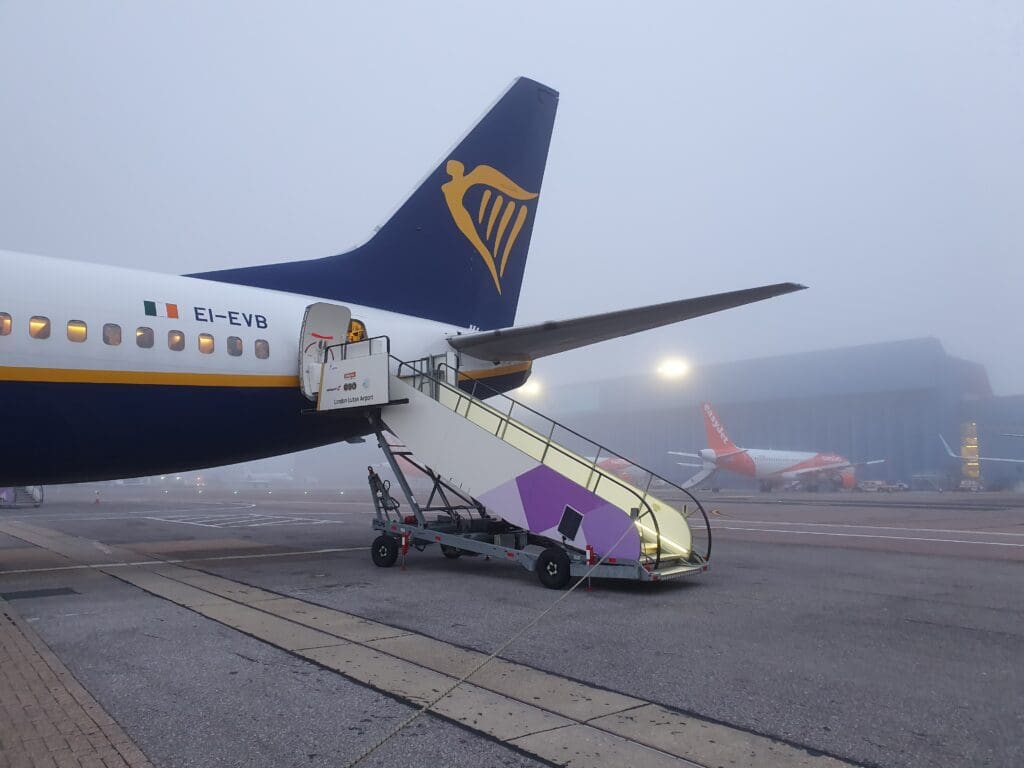
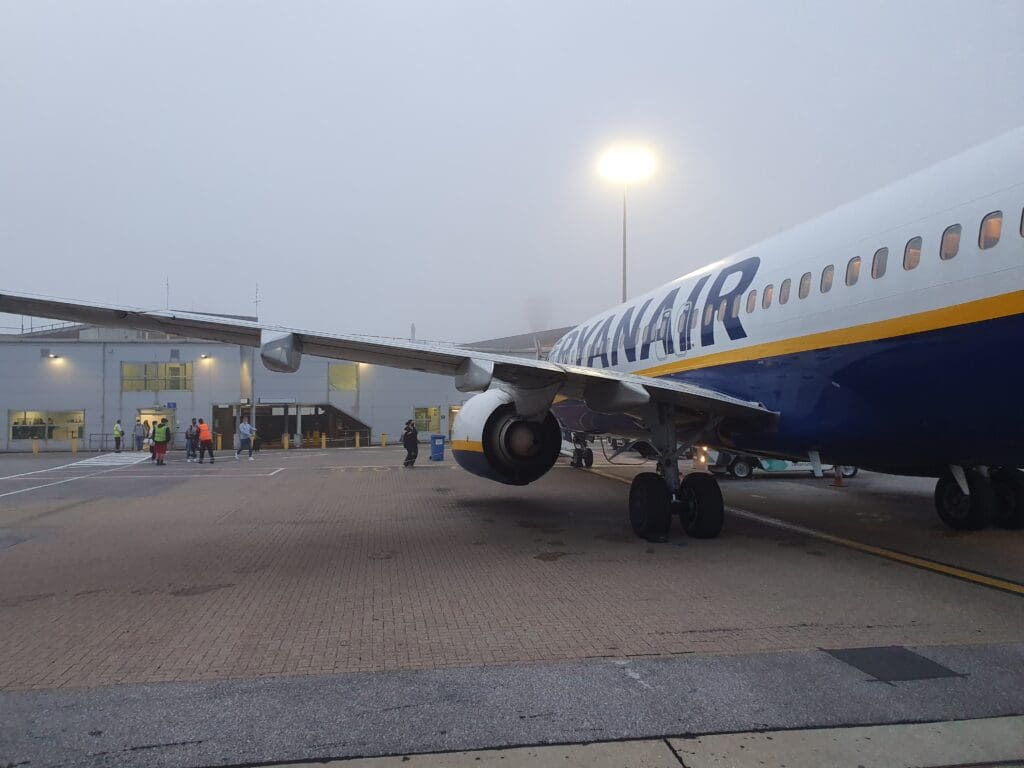
Directly outside the gate, Boeing 737-8AS EI-EVB could be seen sitting between two fellow Ryanair jets whilst a small team of ground staff could be seen preparing the aircraft for its short hop. Manufactured at Boeing’s Renton factory, this particular Boeing took to the skies for the first time in mid-December 2011, making the aircraft almost a decade old at the time of my flight. Following testing and cabin outfitting, in late January 2012 undertook an overnight delivery flight to Dublin and soon entered revenue service with Ryanair. Since then the aircraft appears to have had a rather uneventful life, with one incident listed on The AvHerald when in April 2015, one of the aircraft’s engines ingested a bird whilst rolling down the runway in Alghero resulting in a rejected take-off. In the week prior to my flight, EI-EVB had conducted a total number of 24 flights covering at least 24500 miles, connecting Luton with Arrecife, Athens, Bologna, Bydgoszcz, Dublin, Girona, Kaunas, Krakow, Knock, Malta and Tenerife South.
As with most Ryanair flights, in order to board passengers in the shortest amount of time possible, boarding was conducted via both the aircraft’s built-in steps at the front of the aircraft and a set of moveable steps that had been rolled up to the aircraft’s rear door. As I was to sit in Seat 25F for the ride over to Ireland, I skirted around the aircraft’s port wingtip before clambering up the stairs and entering the rear galley. Once inside, I was given a lukewarm welcome from one of the flight’s flight attendants and without further ado turned left into the 189-seat cabin where I was greeted by the familiar sight of Ryanair’s distinctive interior.
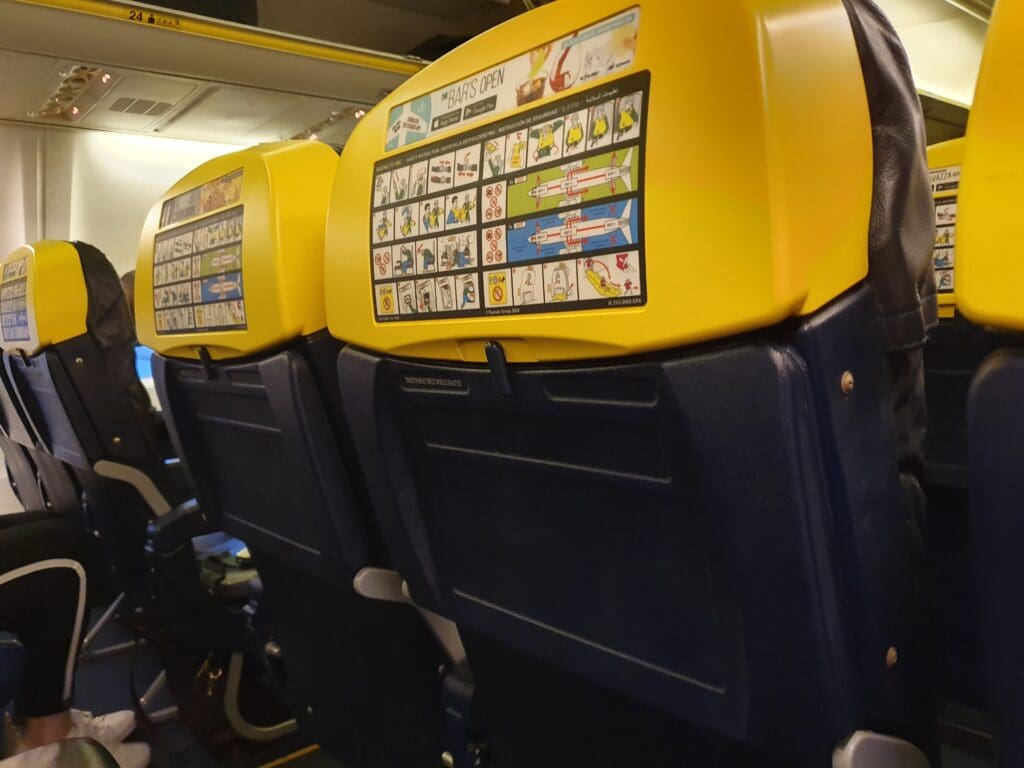
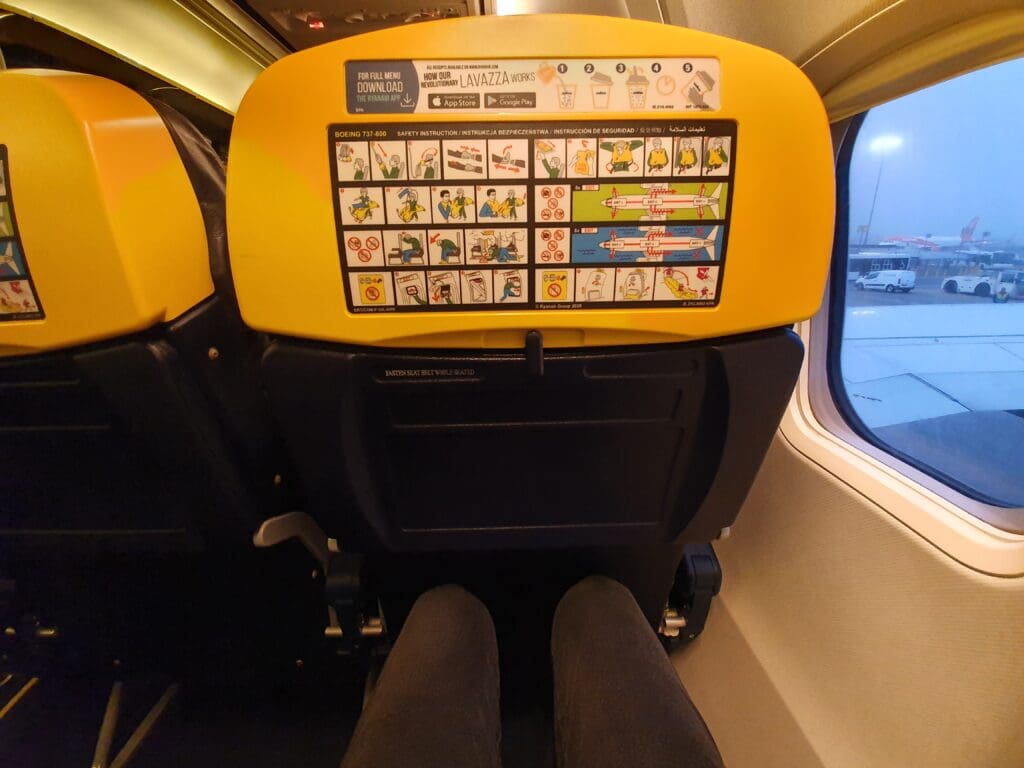
Focusing first on the aircraft’s seats, each of these is virtually totally identical in design, covered by a dark blue faux leather covering, whilst sitting in a blue and yellow plastic shell. Meanwhile, above, the aircraft’s overhead lockers feature a white and yellow colour scheme and at the time of my flight each locker was adorned with Gdansk Airport sponsored adverts for destinations around the airport – Gdansk, Gdynia, Pomorskie and Sopot. Whilst Ryanair’s newer aircraft are complete with Boeing’s Sky Interior and all its related features such as mood lighting, larger overhead lockers and windows, that morning such facets of luxury were absent and the interior seemed to be a little bit dated, in spite of the aircraft’s relatively young age.
From the rear galley, without pausing I completed my journey to row 25 in a matter of seconds where I was delighted to see that my two seatmates were yet to arrive so no awkward pushing was needed. After sliding into my seat, I found myself staring at the safety card and Lavazza coffee advertisement stuck to the seatback in front of me. Whilst recognising that this design is to stop light-fingered aviation enthusiasts from making off with a souvenir, the placing of the safety card at eye level is one way of ensuring this is as unignorable as possible. Turning to the seat itself, this was not the most spacious and proved to be slightly cramped for my 1.85-metre stature, although given the length of the flight that morning this would prove to be little of an issue. After close inspection, I managed to spot a few marks and scratches around my seat, although this was in a generally decent state. That said, I also noticed a few crumbs on my seat and the floor around this which were presumably remnants from the previous day’s flights.
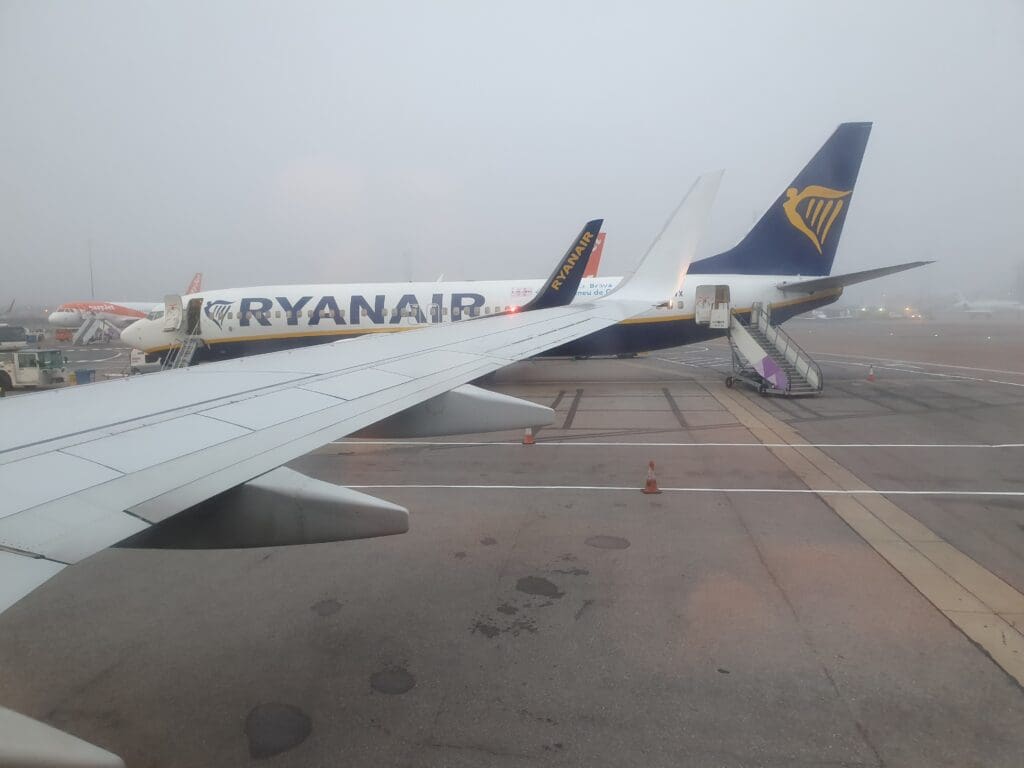
Once strapped in, passengers continued to stream onto the aircraft whilst upbeat songs filled the cabin, their tempos perhaps serving to assist the speed at which passengers made their way down the aisle and took their seats. Much to my delight, as the aircraft became increasingly full, the two seats next to mine remained vacant for some time before finally being taken by perhaps the final two passengers to board. At 0619, the ‘boarding complete’ announcement was made and immediately after this, the Captain performed a welcome announcement which featured an overview of the flight’s route and an update on the weather in Dublin. Outside, indicating our aircraft’s imminent departure, the cones were removed from around the aircraft and five minutes after boarding’s conclusion, the cabin doors were closed.
Once the doors had been closed, the Cabin Manager performed a quick yet informative welcome speech which was followed by a safety demonstration. In line with Ryanair’s procedures, this was performed manually to a soundtrack of pre-recorded instructions, and given the departure and arrival airports, was played in English only. As the crew donned lifejackets in the aisle, the aircraft jolted backwards and the two CFM56-7B26 engines spooled up into life with a fair amount of noise and vibration. After coming to a halt, the tug was disconnected and the jet-powered away under its own steam at 0631, one minute after the flight’s scheduled departure time. Sitting on the right-hand side of the aircraft, as the aircraft taxied around the terminal, I was offered a good view of the diverse selection of corporate aircraft on the ground in Luton that morning. These ranged in size from a Beechcraft King Air to an Emirati-registered Airbus A318CJ operated by Constellation Aviation.
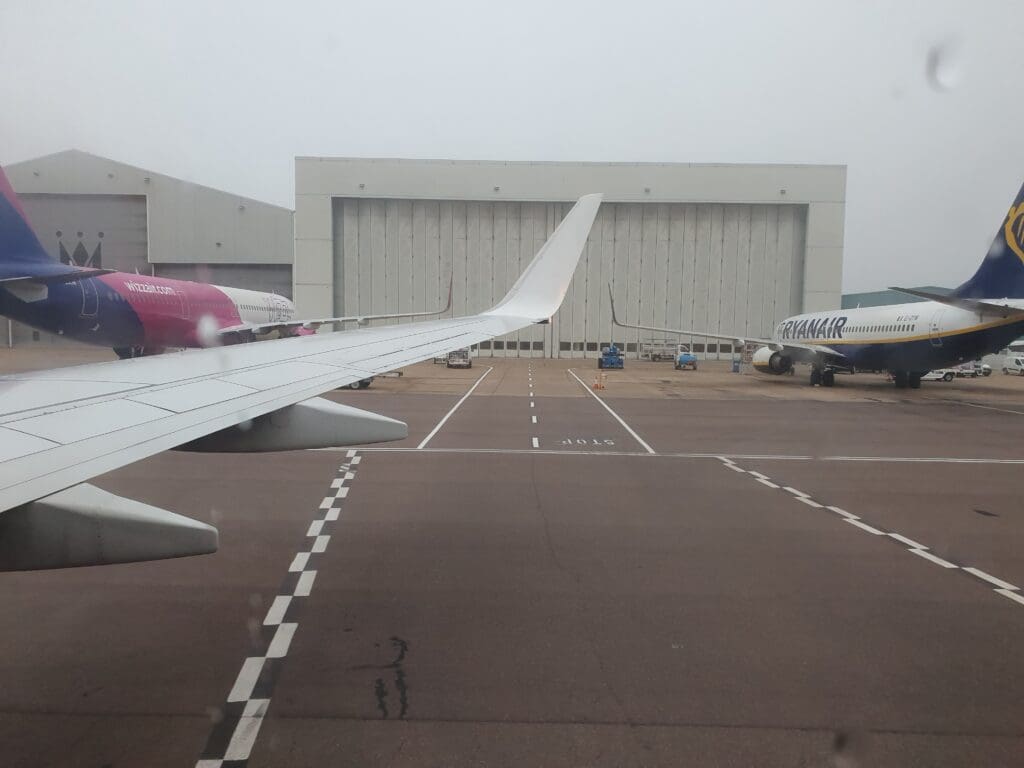
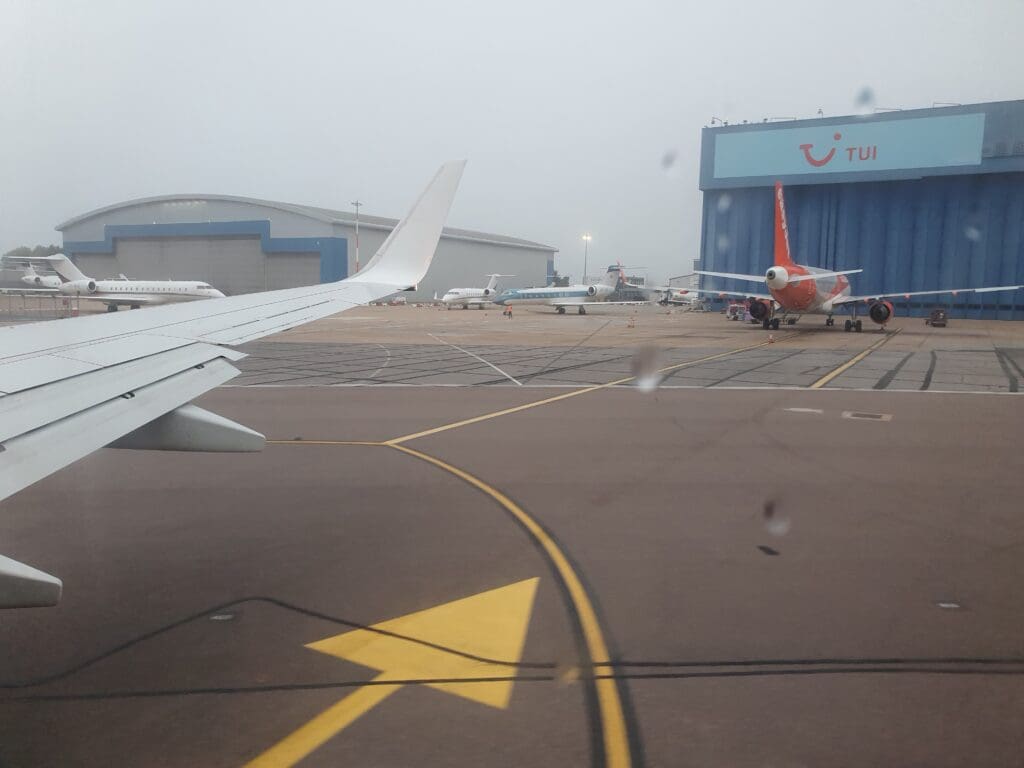
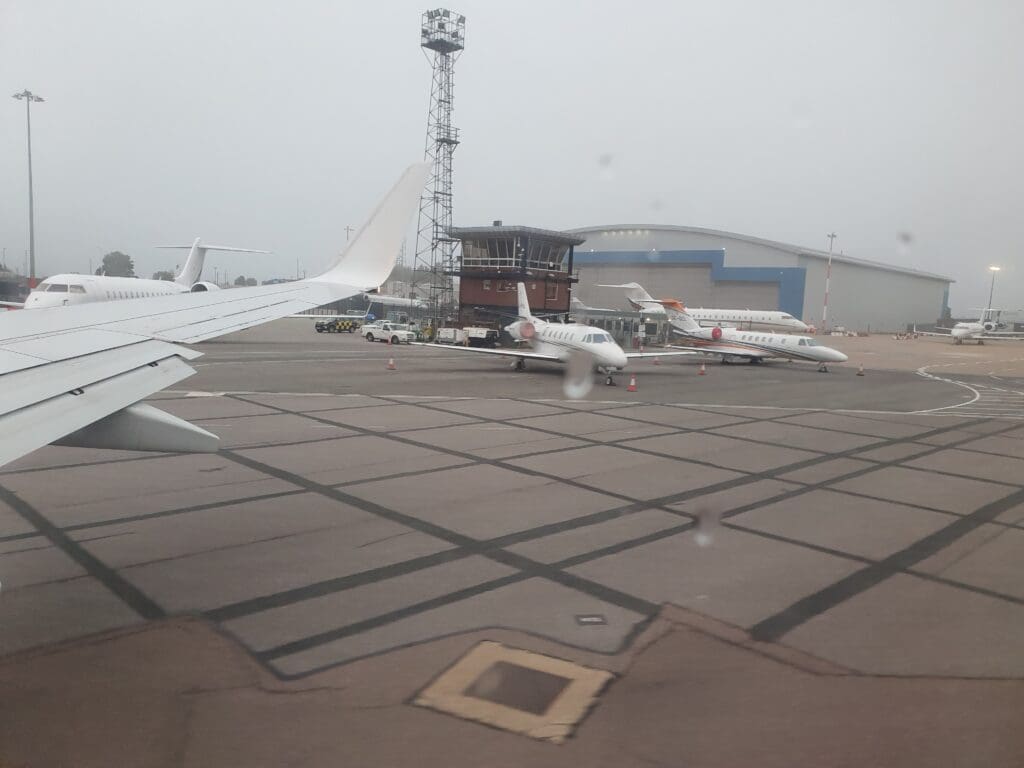
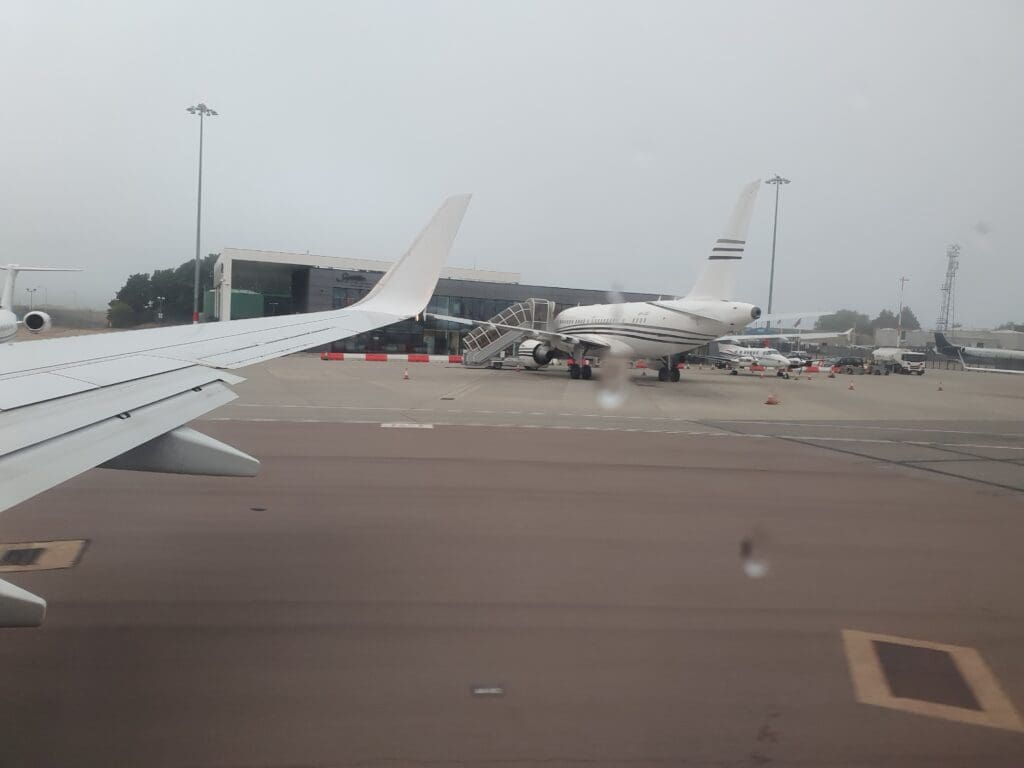
As a rather compact airport, that morning the taxi over to Runway 08 took no time at all and the aircraft soon cautiously headed over the bridge that runs across the main road leading to the airport. Despite departing during the morning rush, without holding the aircraft taxied onto the runway from part way down and performed a powerful rolling take-off. At 0635, the Boeing 737 rotated up into the foggy skies with the ground disappearing within a few short seconds. Moments after the gear was retracted, the aircraft burst through the fog and the cabin suddenly brightened as the morning sunlight poured in.
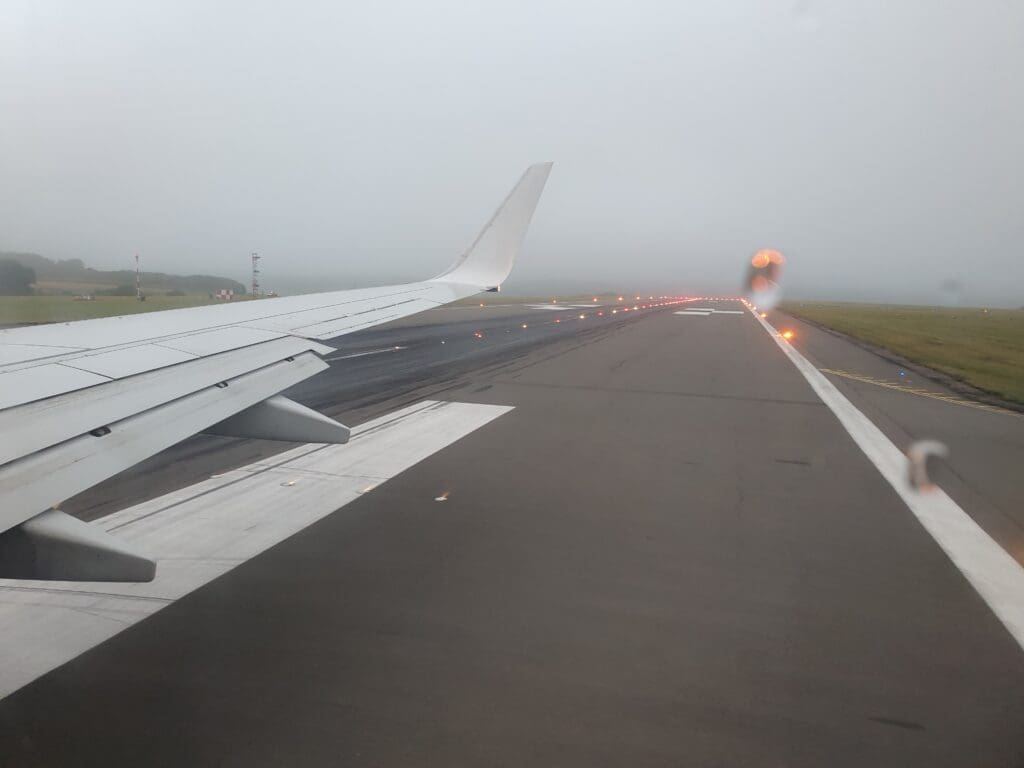
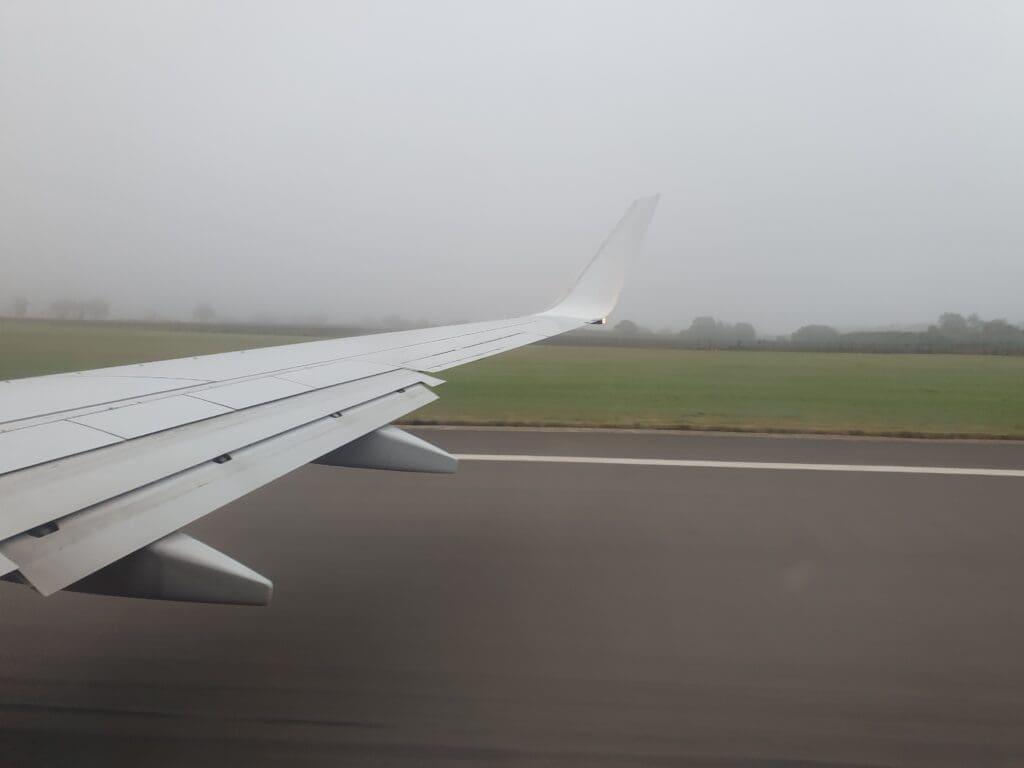
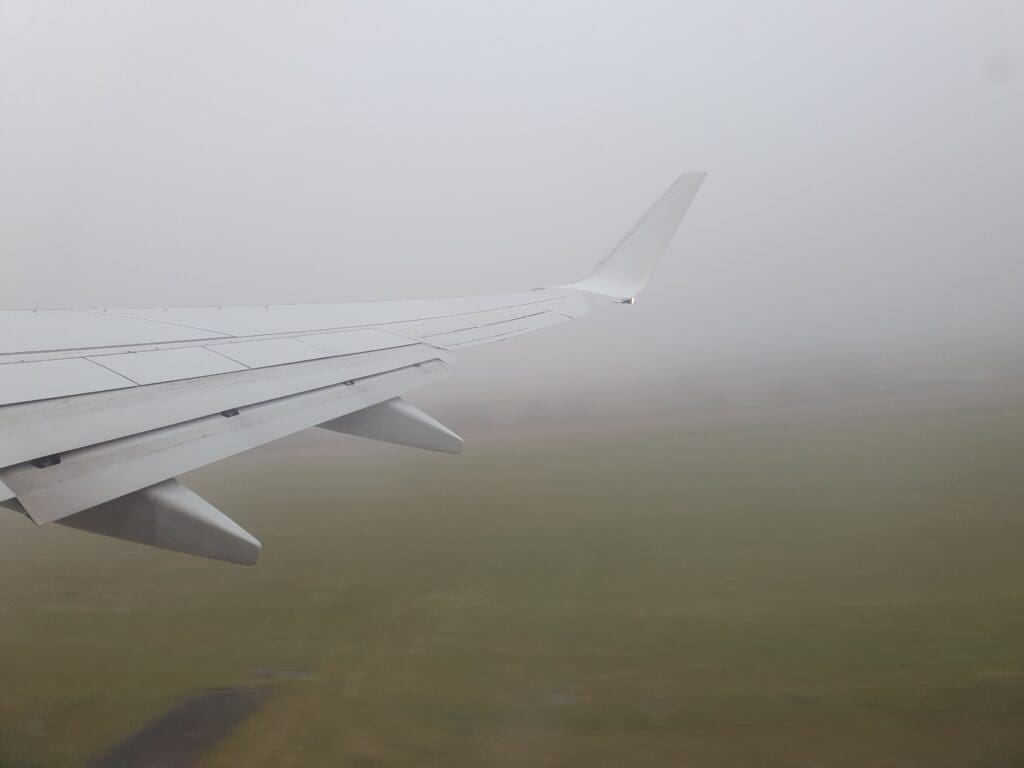
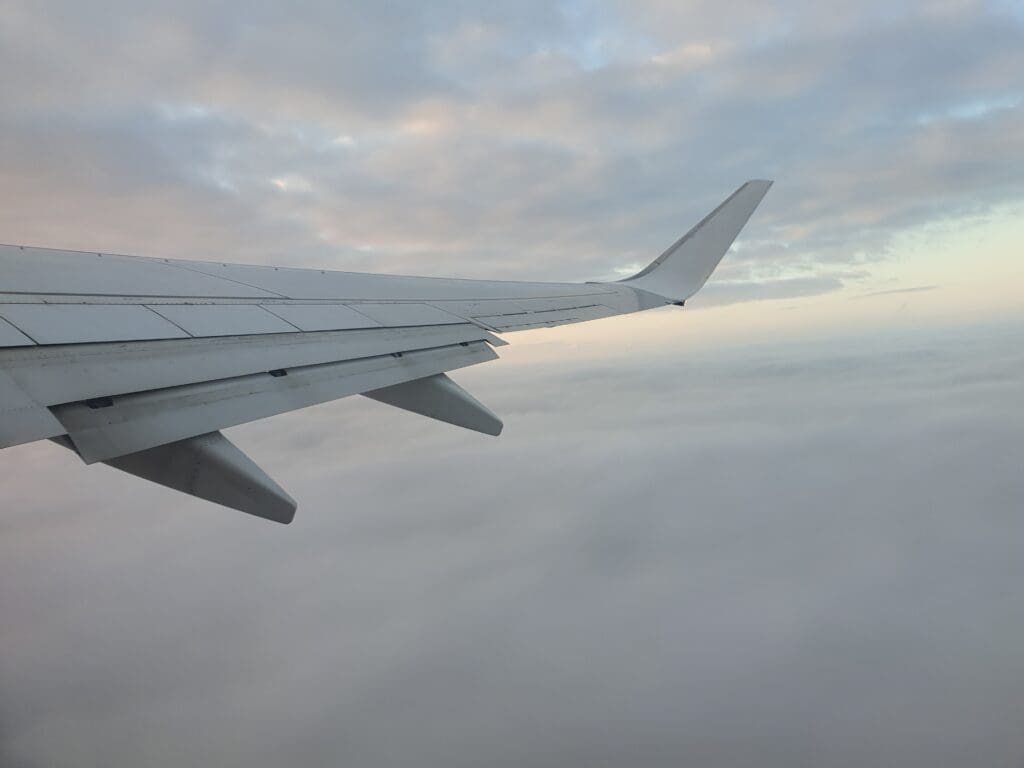
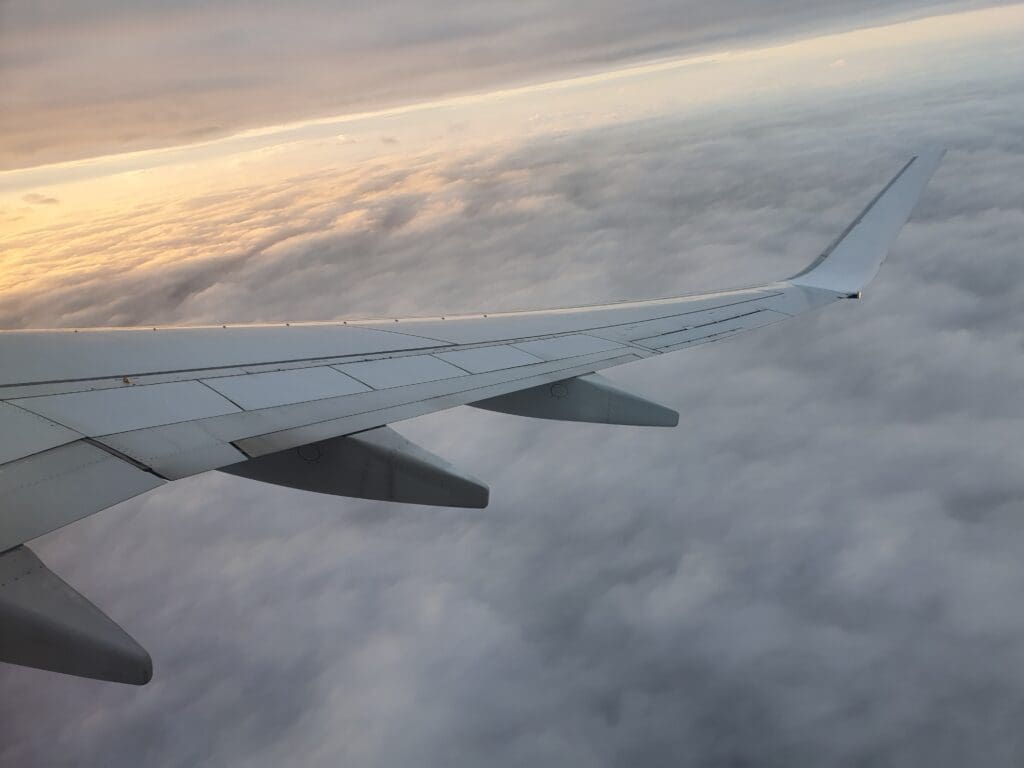
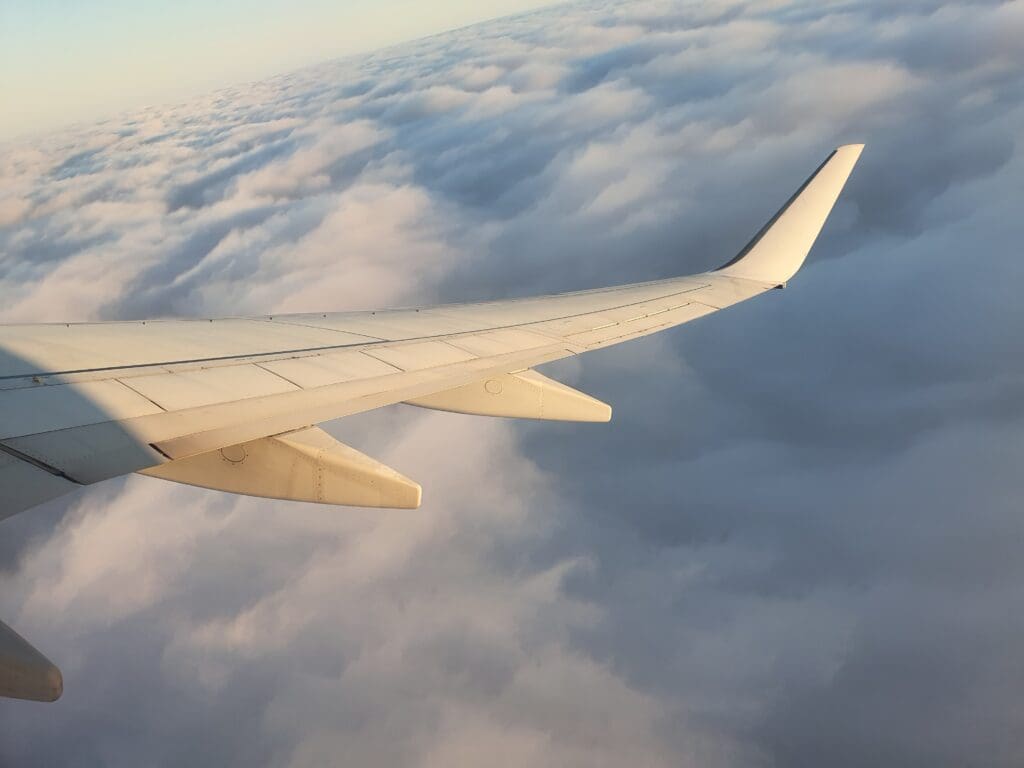
Having departed into the east but needing to head west, once in the skies the aircraft began to gently bank just before reaching the town of Stevenage before rolling out on a westerly heading. Whilst nothing could be seen of the countryside below during the initial stages of the flight, once pointing west the aircraft climbed up over the Chiltern Hills and towards Buckinghamshire’s county town, Aylesbury. At this point, the crew were released from their seats and immediately began their well-versed sales routine.
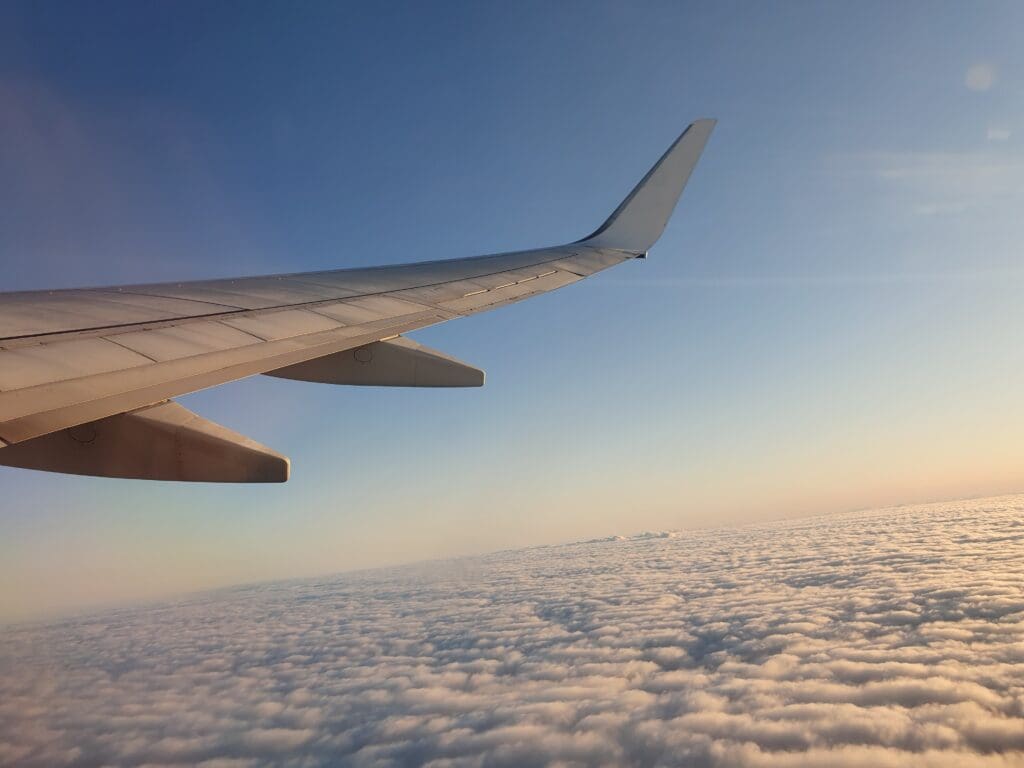
For those in need of some mid-flight refreshment, according to their August 2021 menu, a decent selection of hot food including bolognese, lasagne and Thai green curry (£6 each) is offered, as well as sandwiches (£5.50), snacks and drinks – all of which appeared to be pre-orderable on the app prior to my flight. However, I would be somewhat sceptical that the same full smorgasbord of items was actually available onboard the short morning hop over to Dublin. Nevertheless, the crew did announce the availability of three different types of panini, although few seemed to opt for anything and the crew were able to make a quick sweep through the cabin. In spite of being momentarily tempted by a coffee, I decided to save my £3 and opt for a coffee shop coffee for the same price once back on the ground.
Returning to the route, upon reaching Oxford, the jet turned onto a northwesterly heading and cut across the Cotswolds before arriving at Cheltenham at which point the Boeing levelled off at its cruising altitude of 34000 feet. From there the aircraft skirted the border area between England and Wales before making its way over the latter, at which point the faint outline of fields below became visible. Inside the cabin, that morning the atmosphere was relatively subdued with most passengers passing the time by either sleeping or reading. Interestingly, in spite of being an entirely smooth journey, the seatbelt signs remained on for the duration of the flight, although the crew took little issue with those who wished to visit the lavatory whilst in the air.
Given the flight’s short distance, it came as no surprise to feel the aircraft sinking back down towards earth after having flown straight and level for a total of eight minutes. At this point in the flight, having completed their refreshment round, an announcement was made advertising Ryanair’s charity scratch cards before several crew members passed through the aisle waving these although it seemed few partook in purchasing any cards. Beneath the aircraft, the River Dyfi estuary came into view beneath the aircraft as the jet crossed the Welsh coastline and flew out over the Irish Sea. Journeying out over Cardigan Bay, the aircraft passed the western tip of the Llŷn Peninsula at which point the faint outline of the mountains of Snowdonia could be seen in the distance.
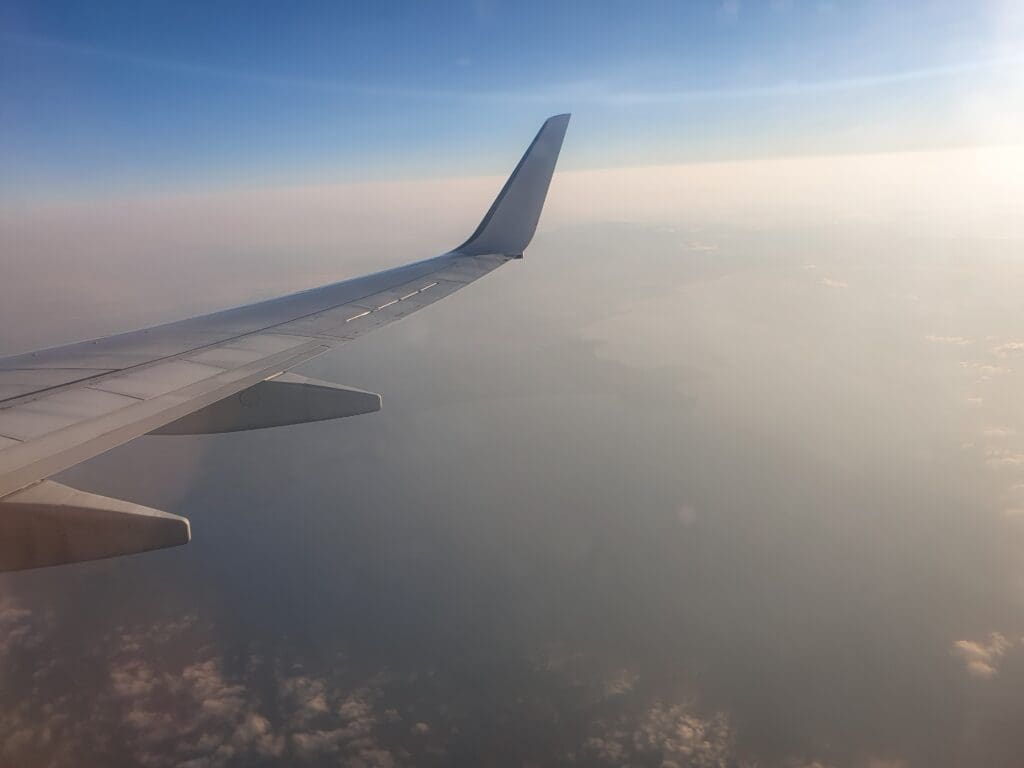
As the aircraft continued to sink down over the Irish Sea, the cabin crew manager performed the usual pre-arrival announcement requesting passengers to return to their seats and ensure their seatbelts were fastened in preparation for our arrival. At 0714, one of the pilots made the ‘ten minutes to landing’ announcement at which point, the crew passed through the cabin ensuring all was in place for our arrival before strapping themselves in. As the blue waters of the Irish Sea came closer and closer, the flaps were partially extended and soon enough Lambay Island appeared just underneath the starboard wingtip.
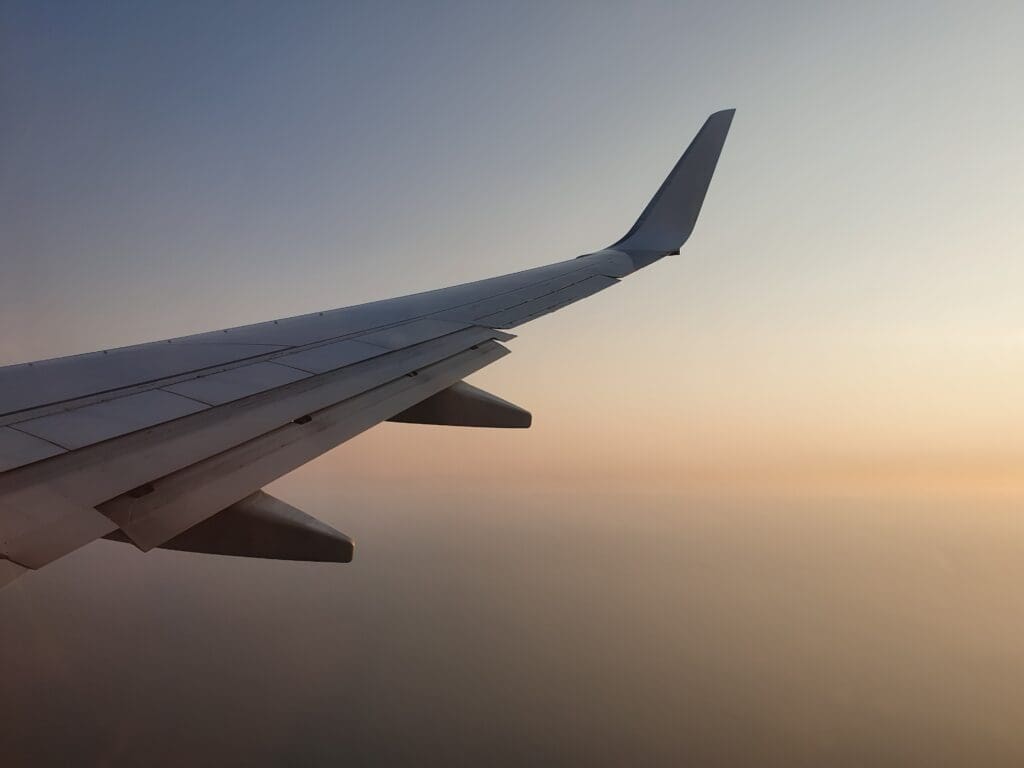
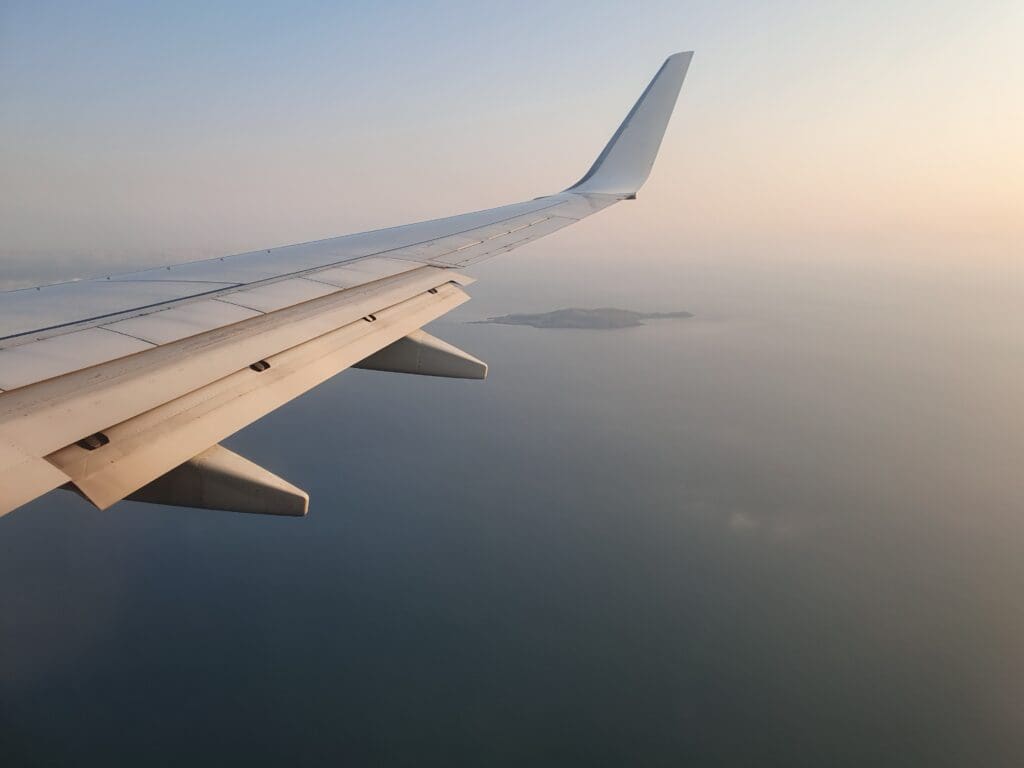
Within a few moments, the Fingal coastline popped into view in the form of Portmarnock and its sandy beach. Once full flaps had been extended along with the landing gear, various neighbourhoods interspersed by fields and the occasional industrial estate could be seen which was soon replaced by large car parks as the aircraft neared the airport.
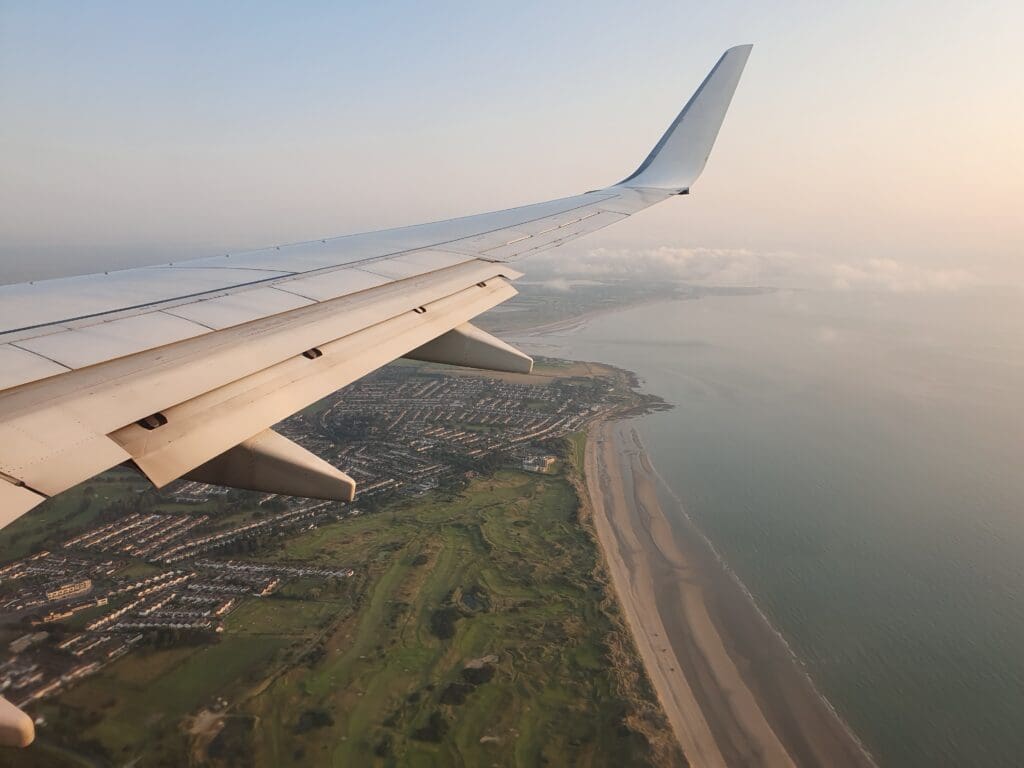
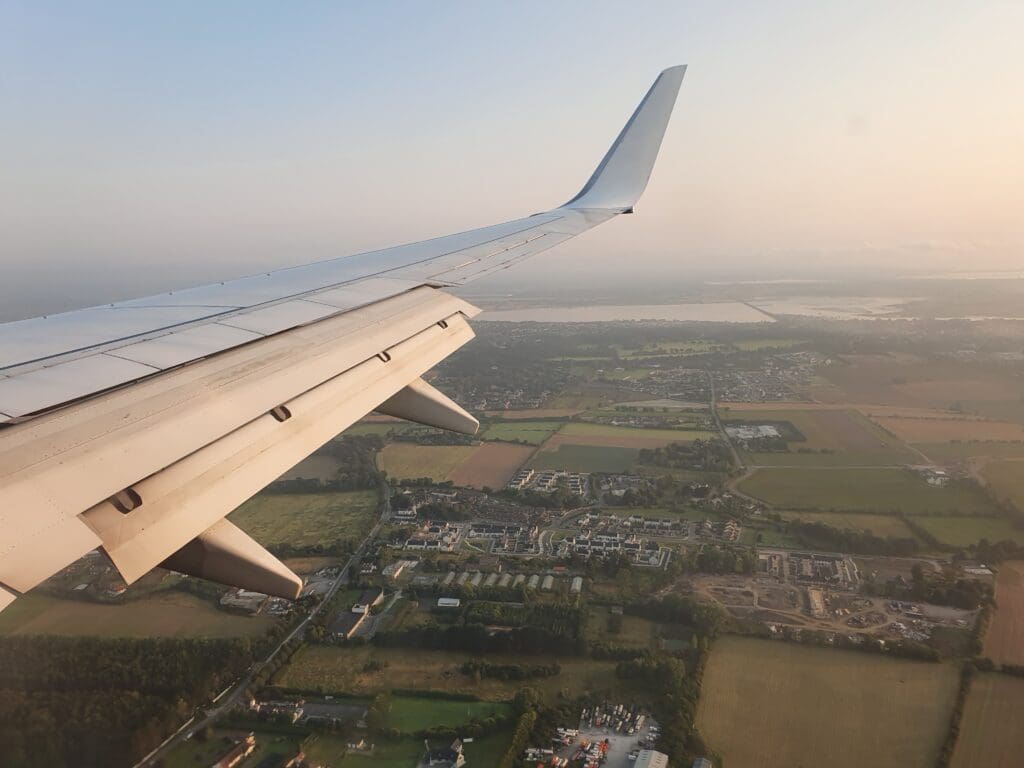
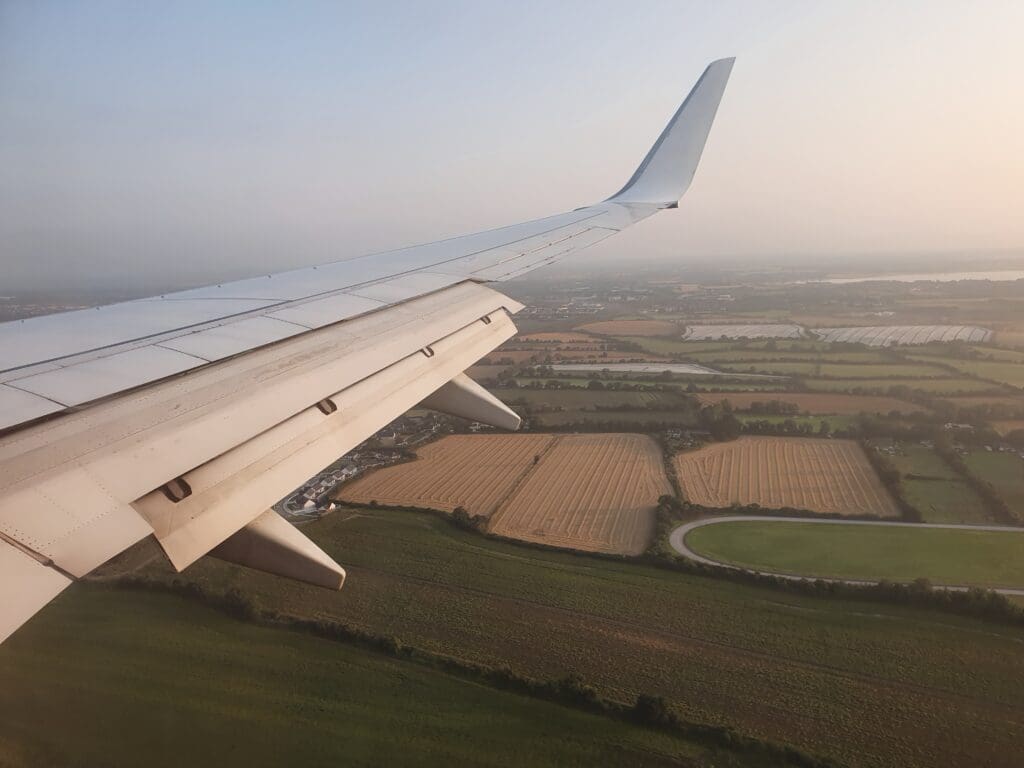
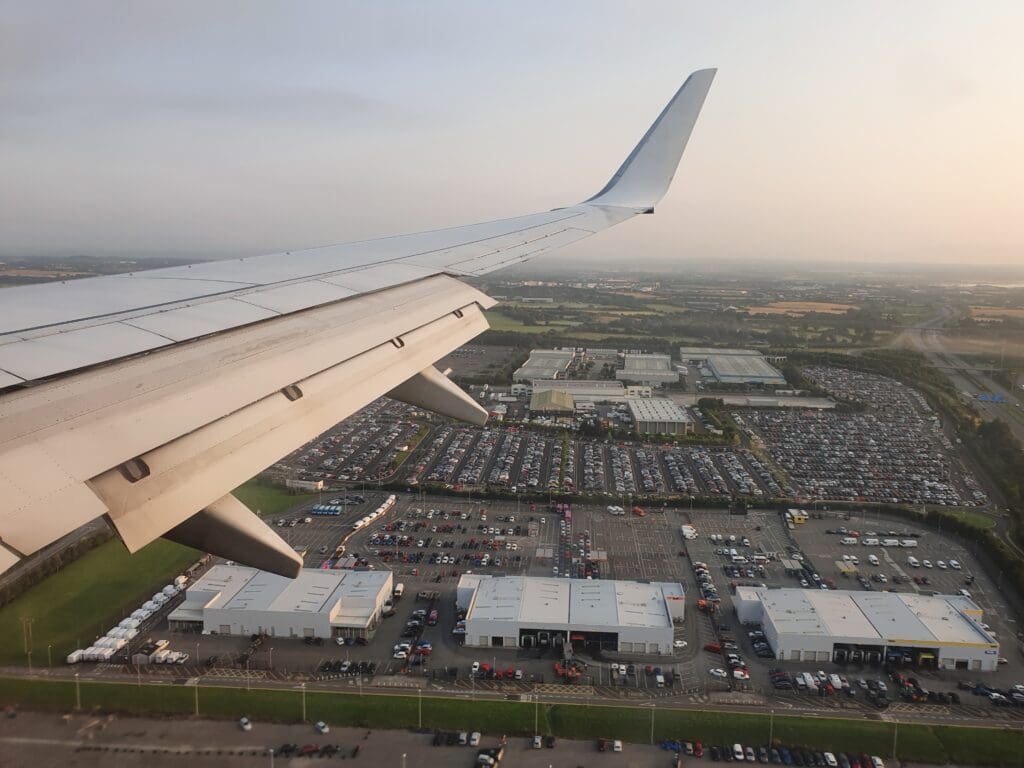
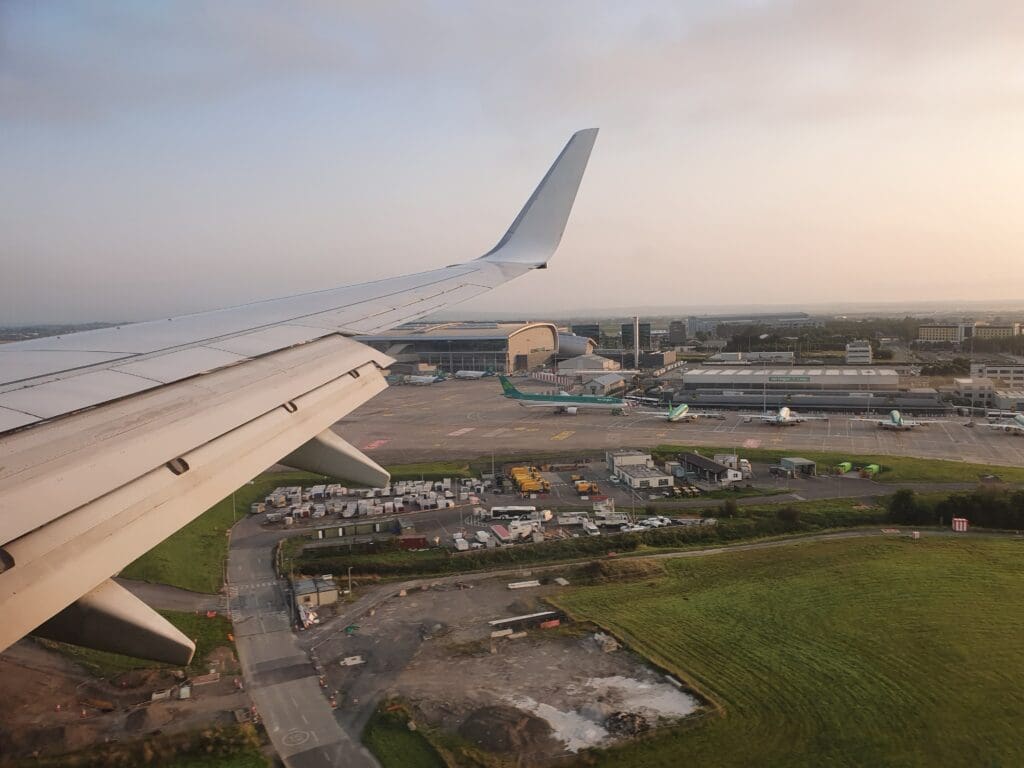
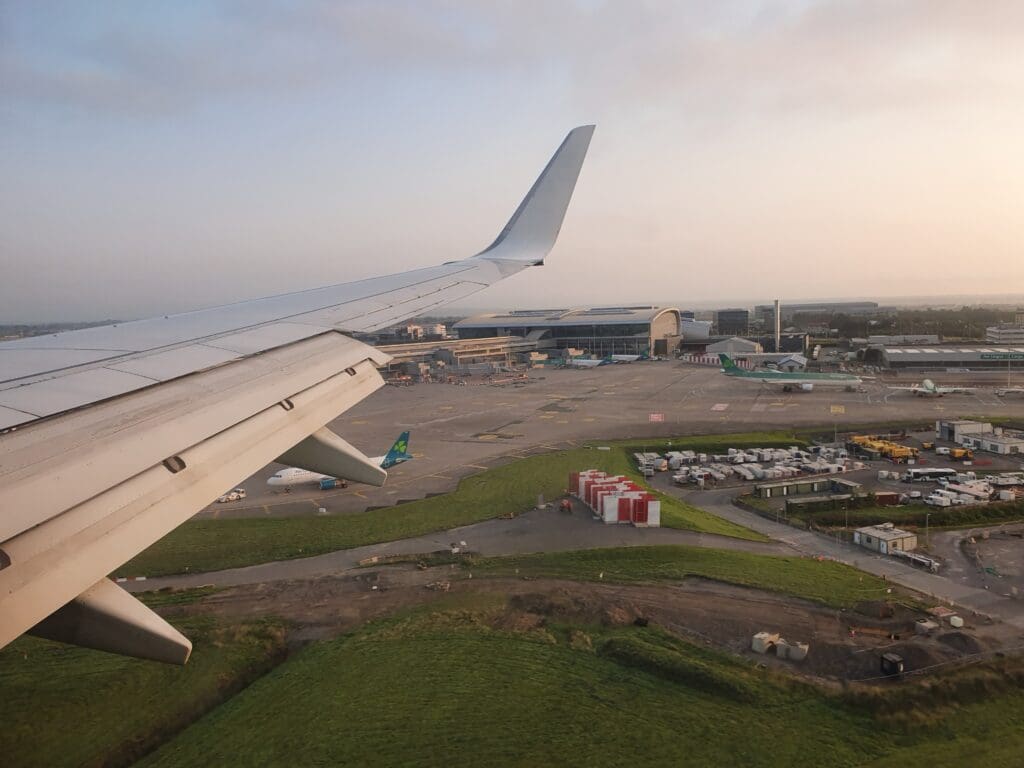
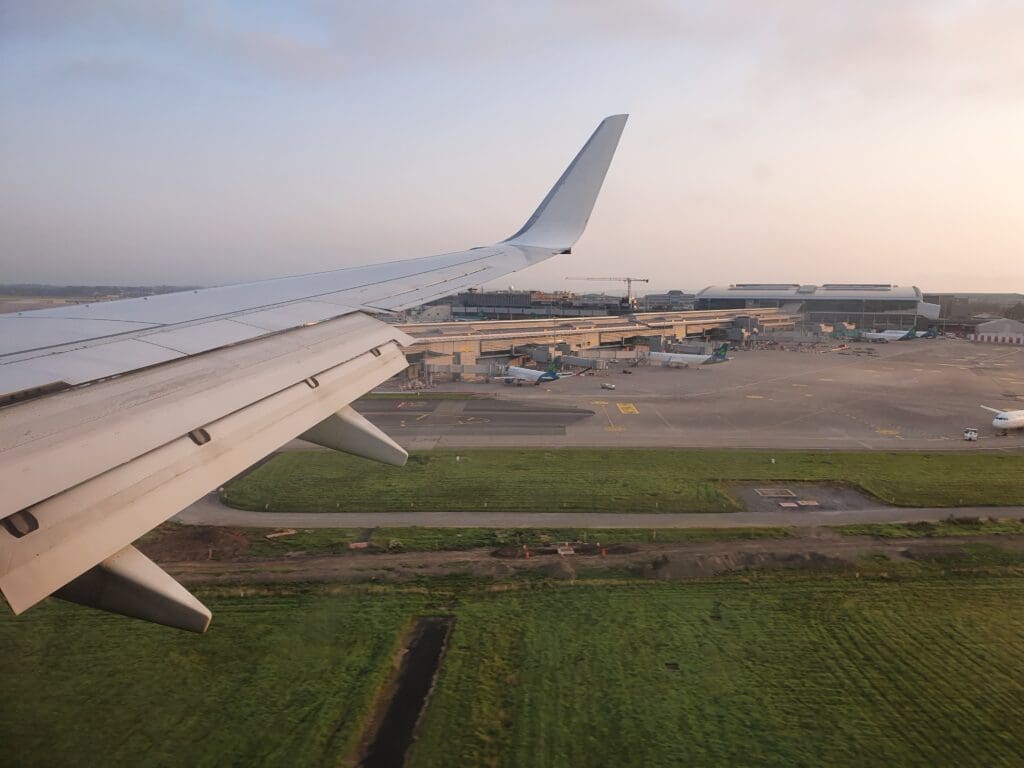

At 0724, a short 49 minutes after leaving Luton, a host of parked Aer Lingus aircraft could be seen and the aircraft glided over the airport’s perimeter fence before the jet was firmly planted down on Dublin Airport’s Runway 28L. Once on the ground, heavy braking was applied and the cabin was filled with noise from the aircraft’s reverse thrust before the jet turned right off the runway. Immediately after leaving the runway, the cabin manager announced welcoming all to Dublin, followed by Ryanair’s infamous on-time arrival jingle.
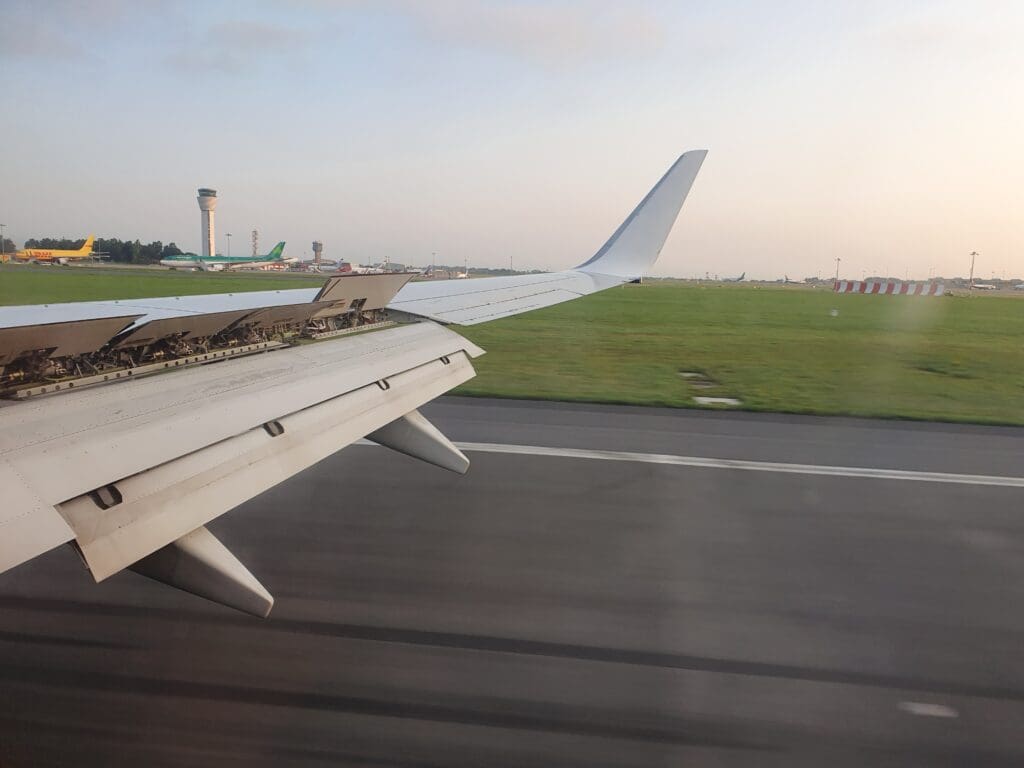
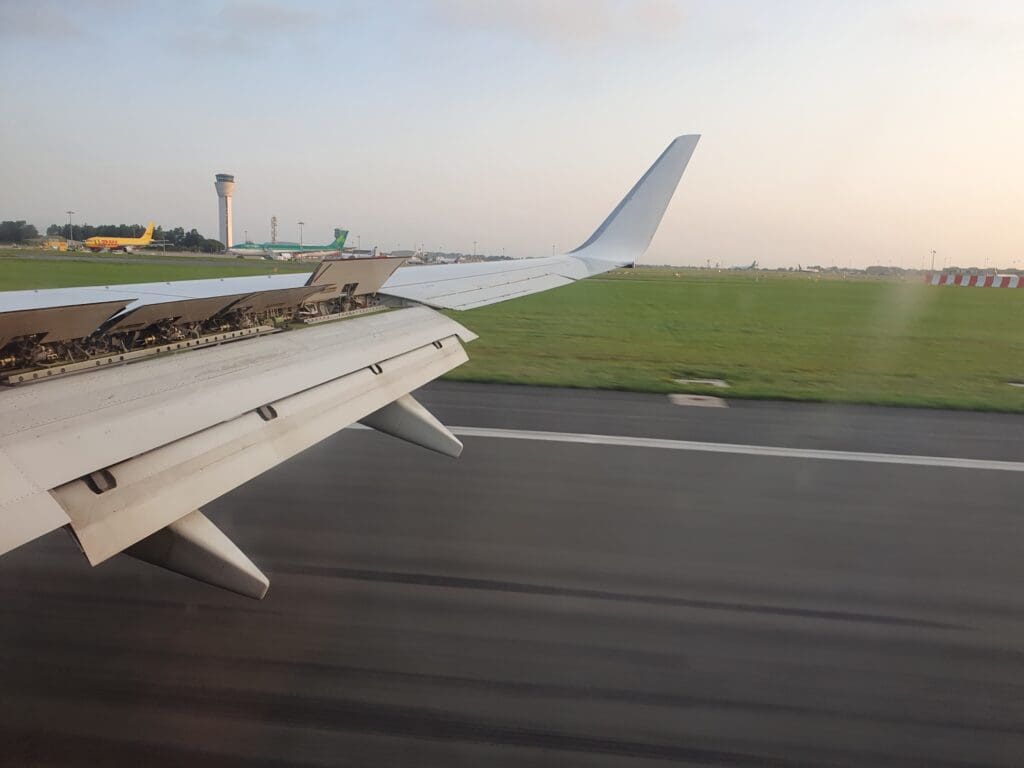
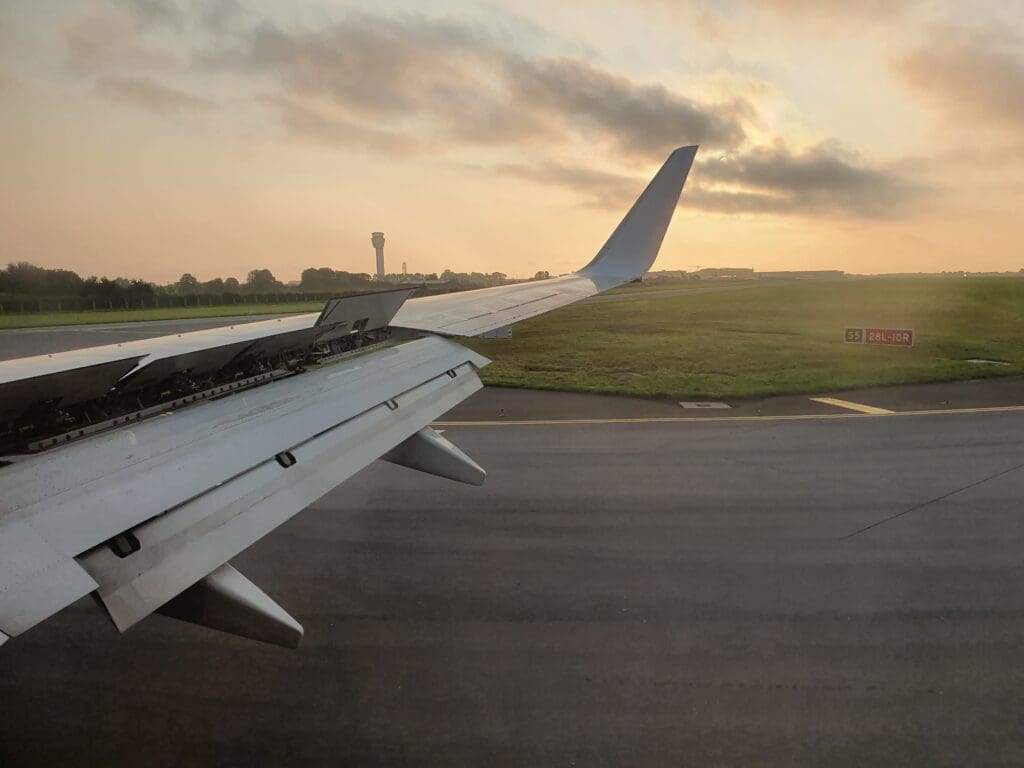
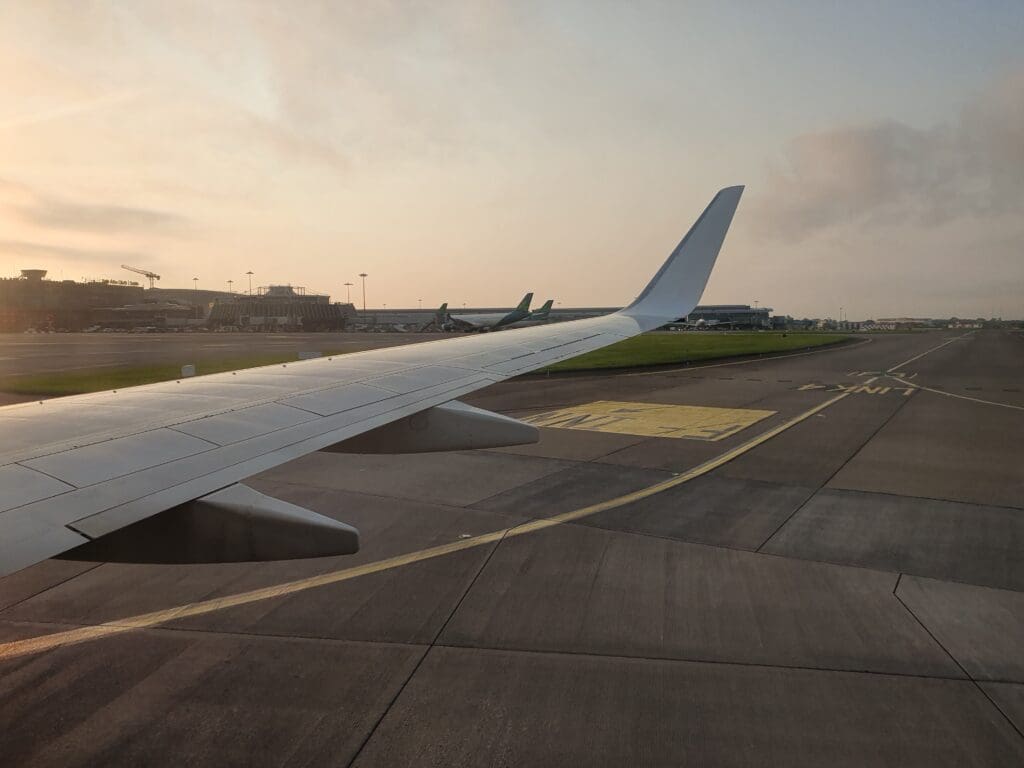
From the runway, the taxi over to Terminal 1 took no more than a few minutes and at 0729 the Boeing 737 came to a halt at Stand 124. As the engines spooled down, it seemed as if at least half of those onboard stood up, desperate to escape the aircraft. Meanwhile, the Captain’s voice filled the cabin for a second time with a final word of thanks for flying with Ryanair. Fortunately for those in a hurry to leave the aircraft, disembarkation commenced quickly and I soon found myself thanking the same crew member I had been welcomed by who gave me a much more friendly goodbye before I stepped into the Irish air at 0735. Interestingly, my flight had served as a quasi-positioning flight and the aircraft was to shift bases to Dublin, whilst another Boeing 737 would be operating the 0815 return flight to Luton which was shifting bases in the opposite direction.
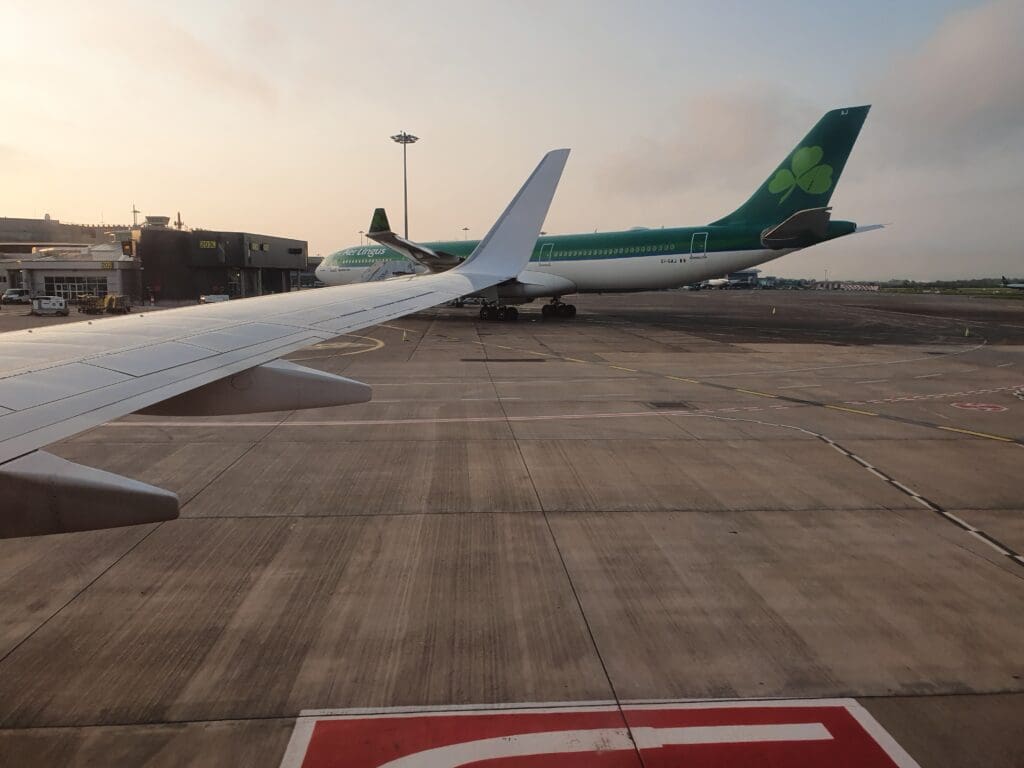
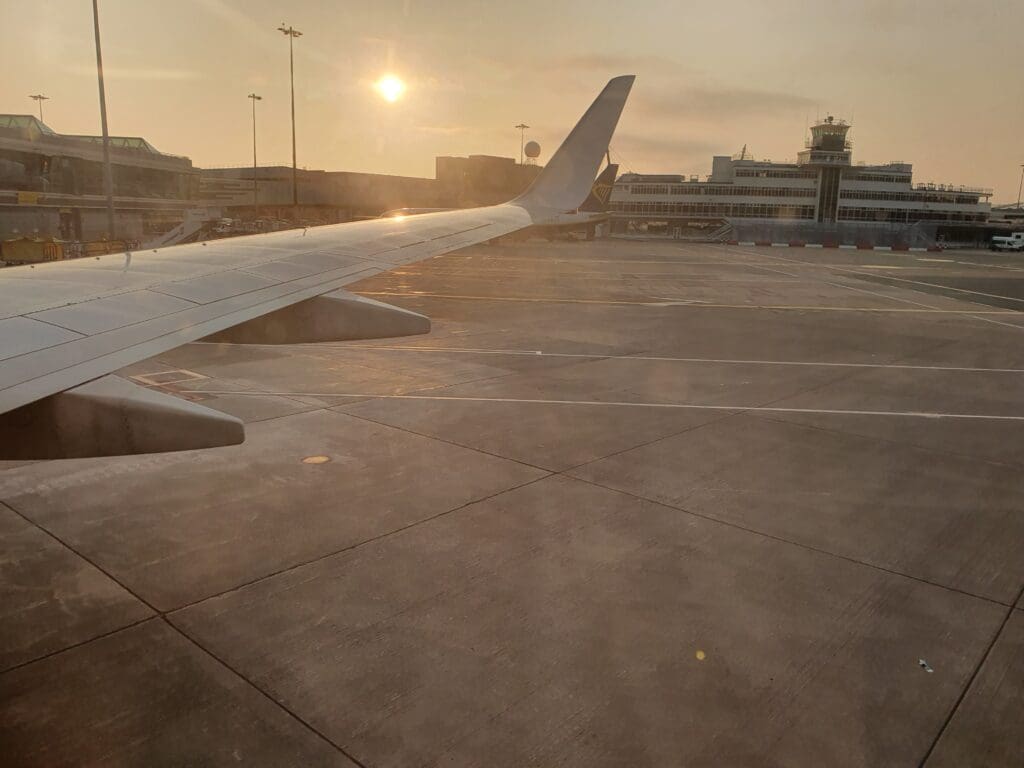
From the aircraft, I made my way up into the terminal and commenced the long walk to immigration. Having read several articles regarding long immigration queues in Dublin, I was pleased to find that once I eventually arrived in the immigration hall, most booths were staffed so I was able to pass through this quickly before being spurted out into Terminal 1’s busy arrival area.
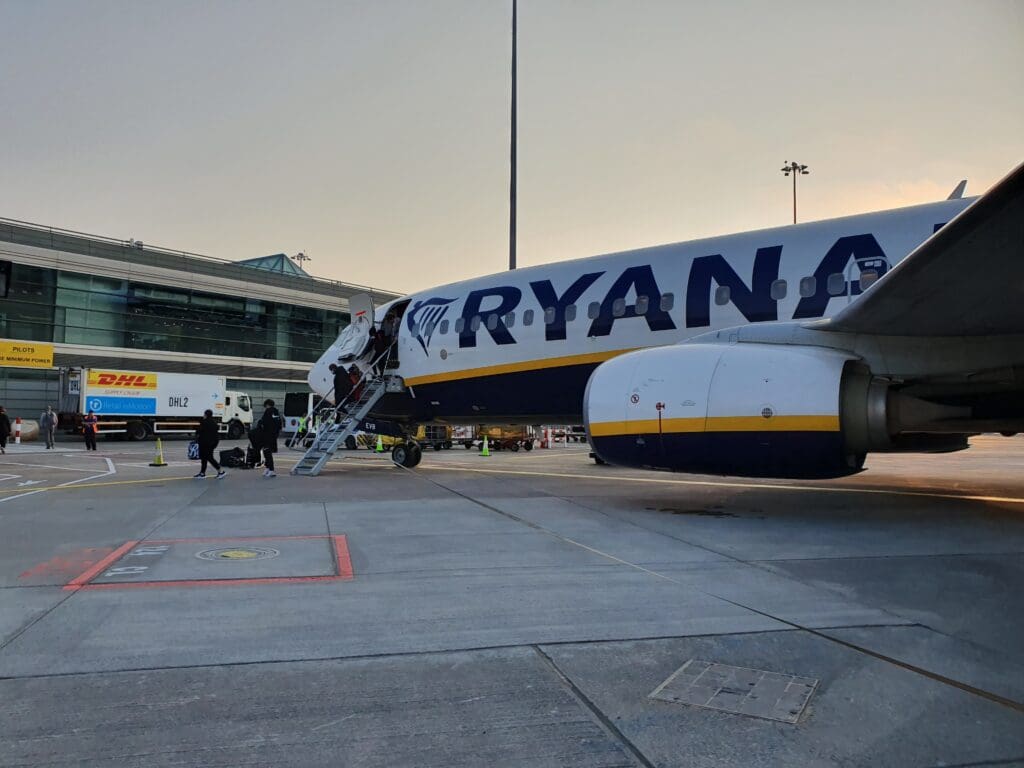
Conclusion
All-in-all, Ryanair did what they were supposed to do – the airline propelled me from Luton to Dublin cheaply, ahead of schedule and with minimal fuss. Whilst some of my interactions with the crew had not been fantastic, those working the flight were pleasant enough and conducted their duties efficiently. Granted, there were various other more luxurious ways I could have reached Dublin, but all of which would have cost me significantly more than the pittance I had paid for my Ryanair ticket. Therefore, to conclude, considering the price I paid, I was left with little to complain about and would not hesitate to fly with Ryanair again.

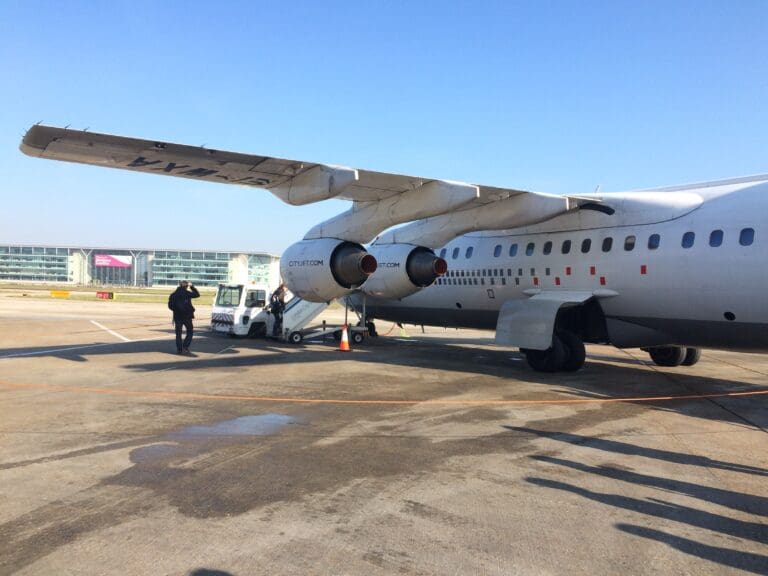
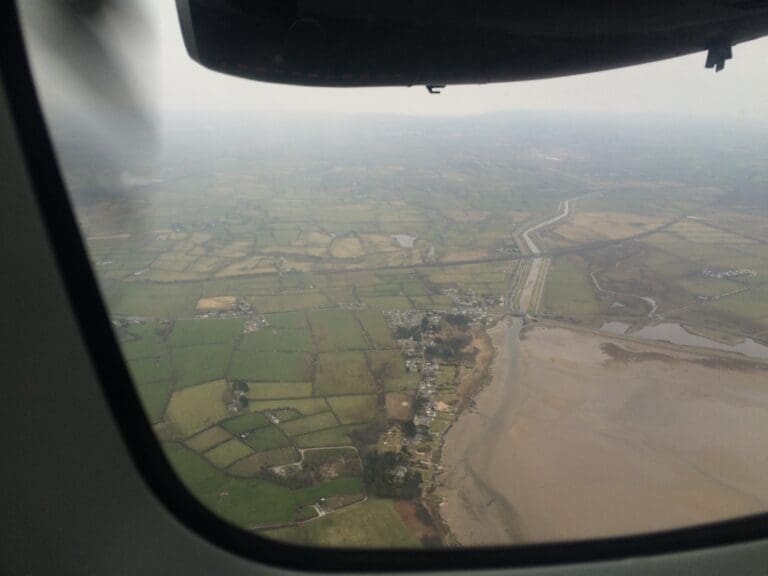
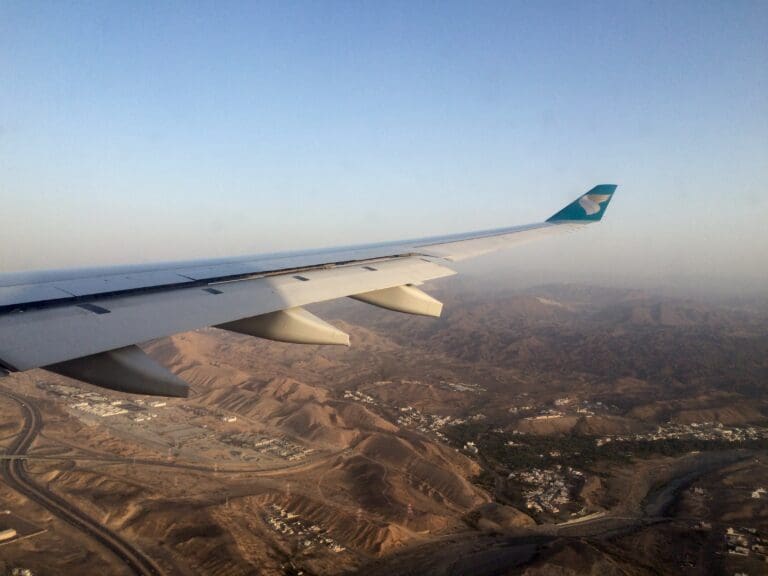
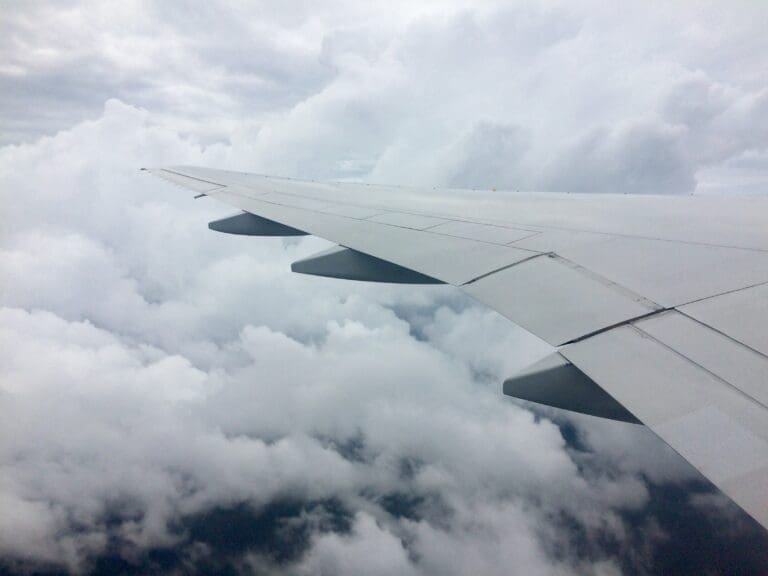
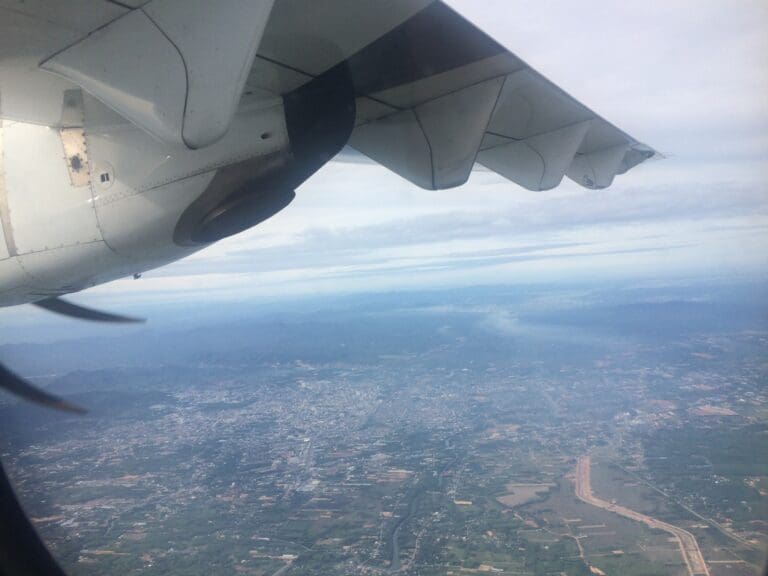
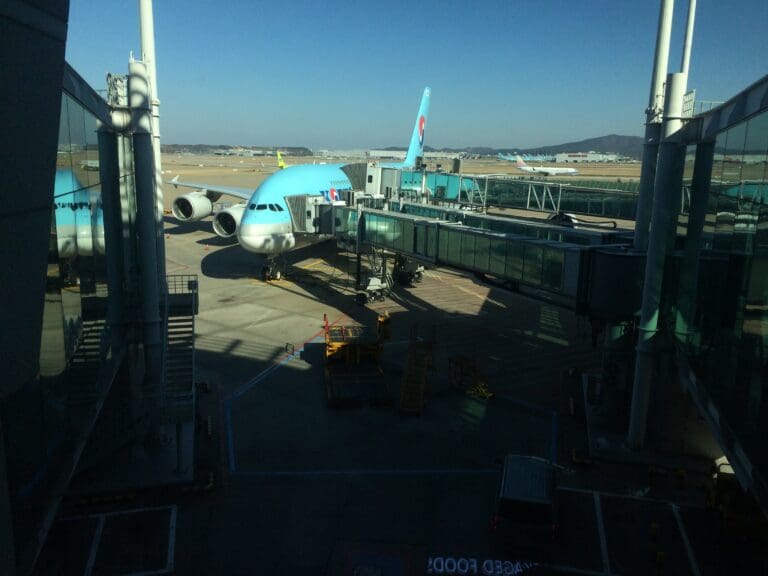
Too true & the perceived gap with the more “luxurious” carriers is hugely smaller than most perceive. BA have densified their cabins with less space per seat, smaller toilets and shrunken galleys to squeeze in more customers. The “refreshment” is around 10grs of the cheapest carbs available and a nano portion of water, sometimes bottled, sometimes in a “cup”….
For short journeys, the choice is clear.